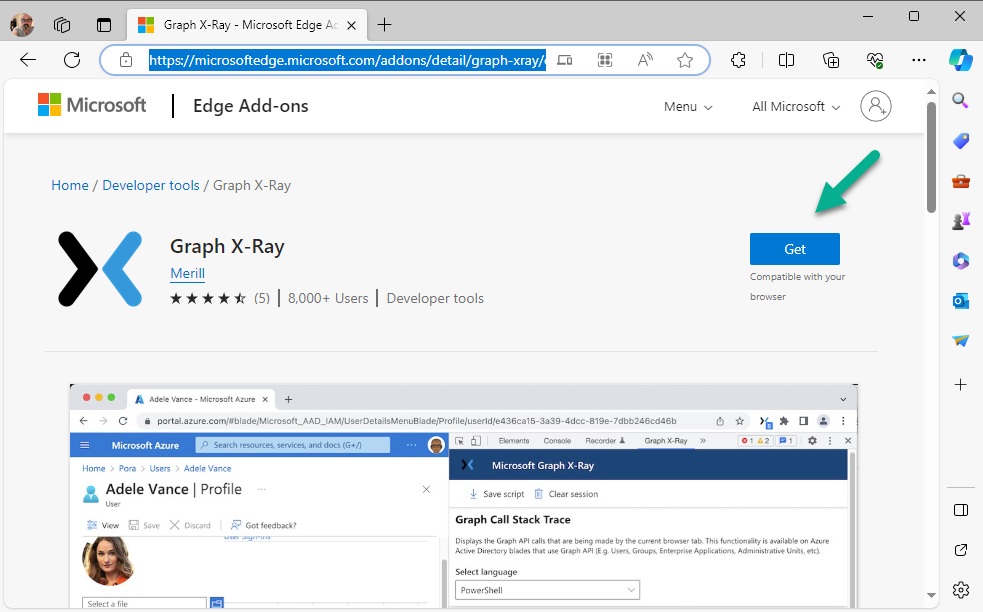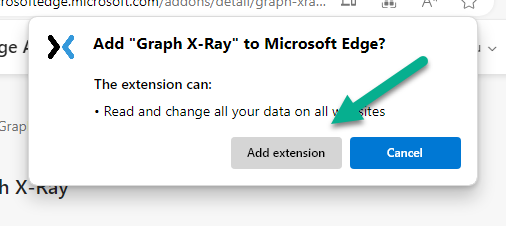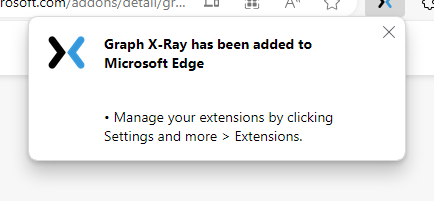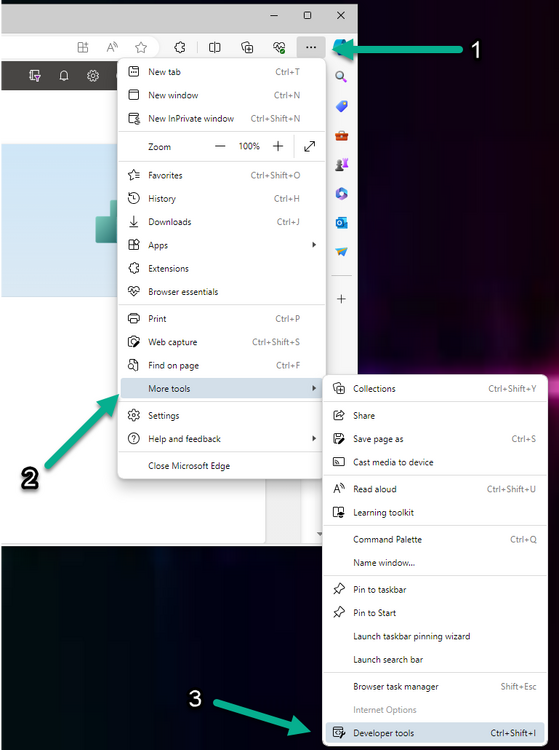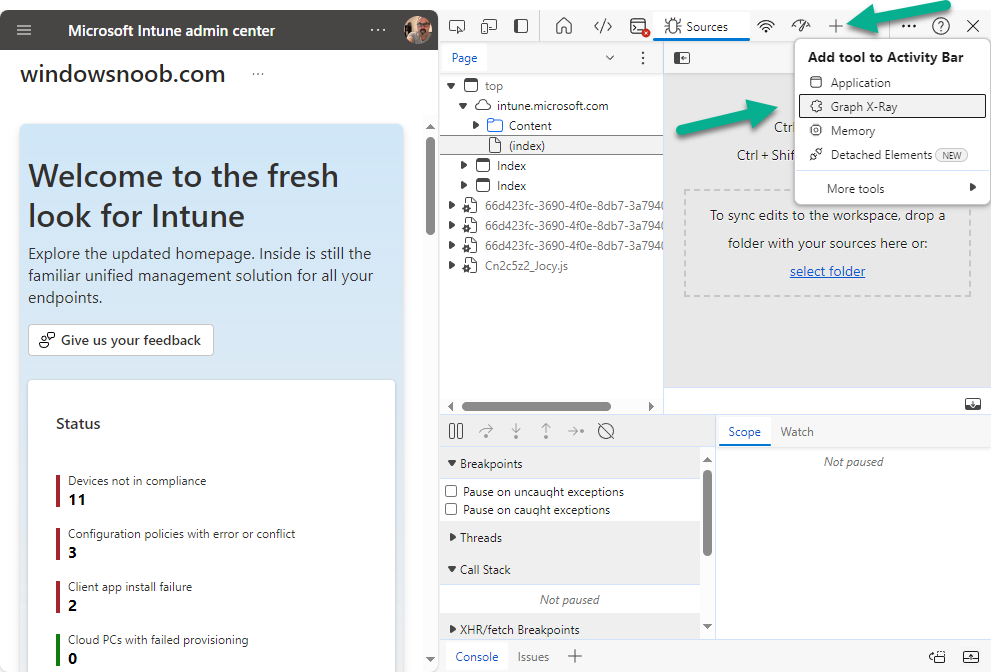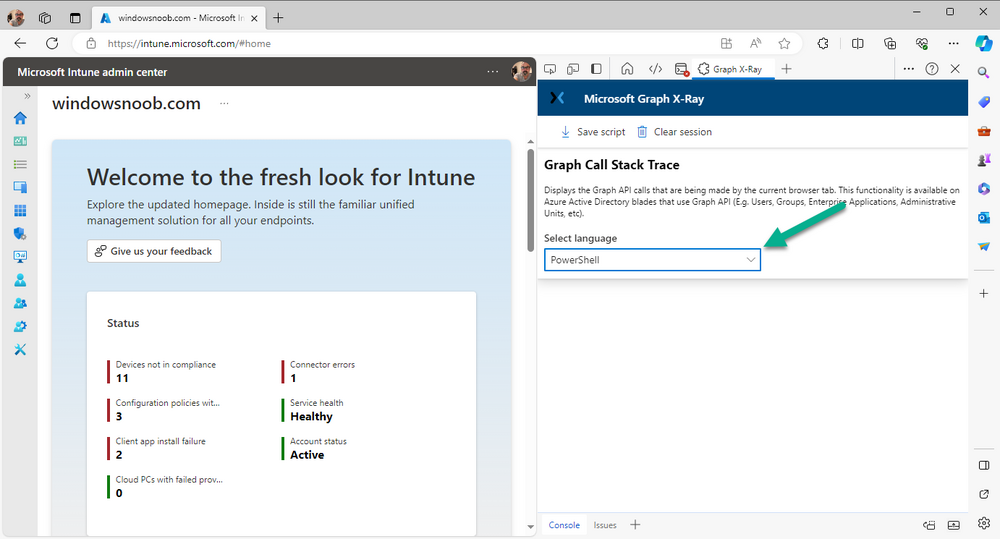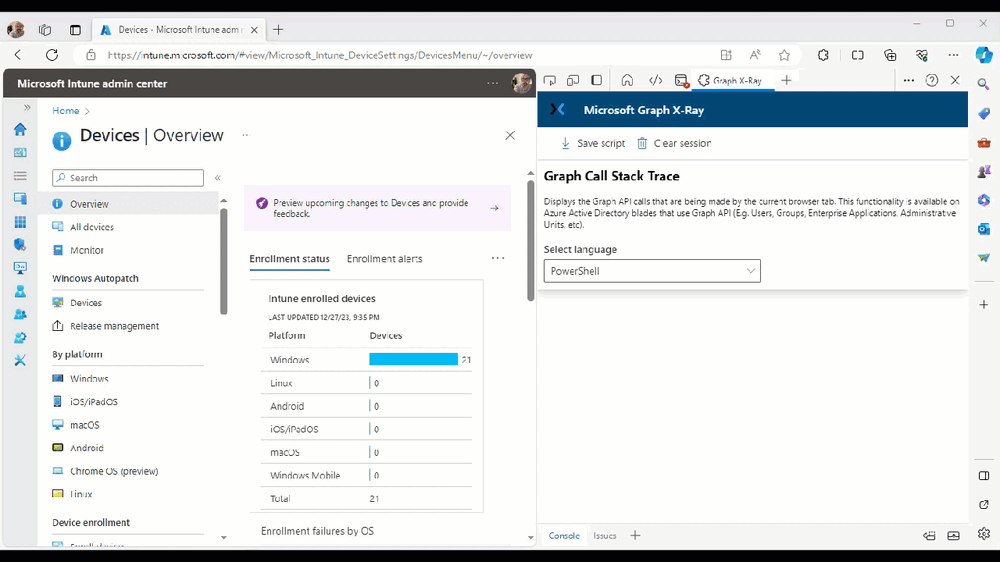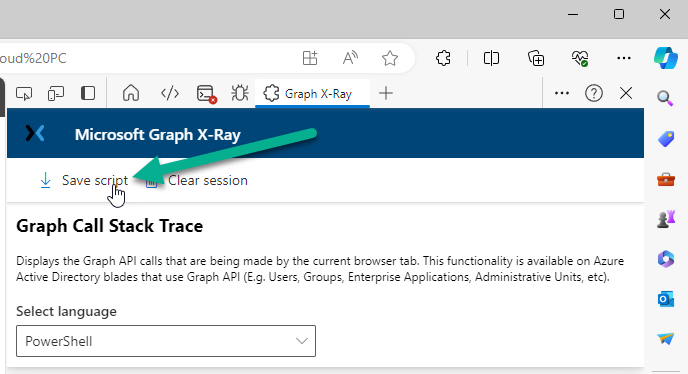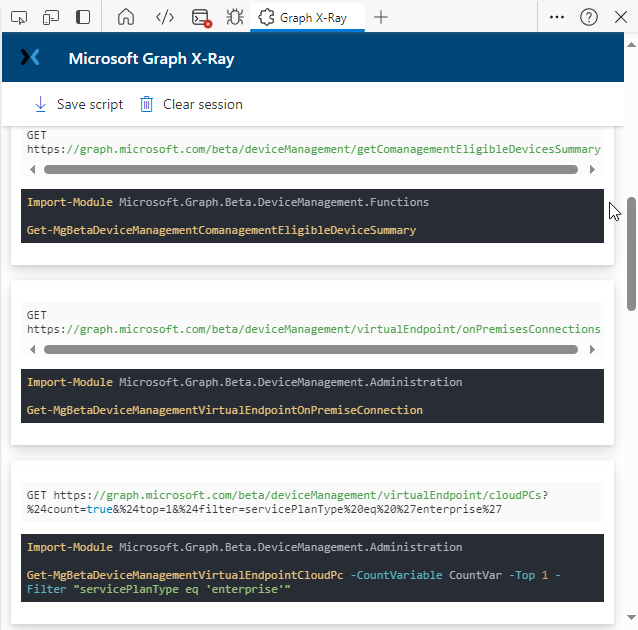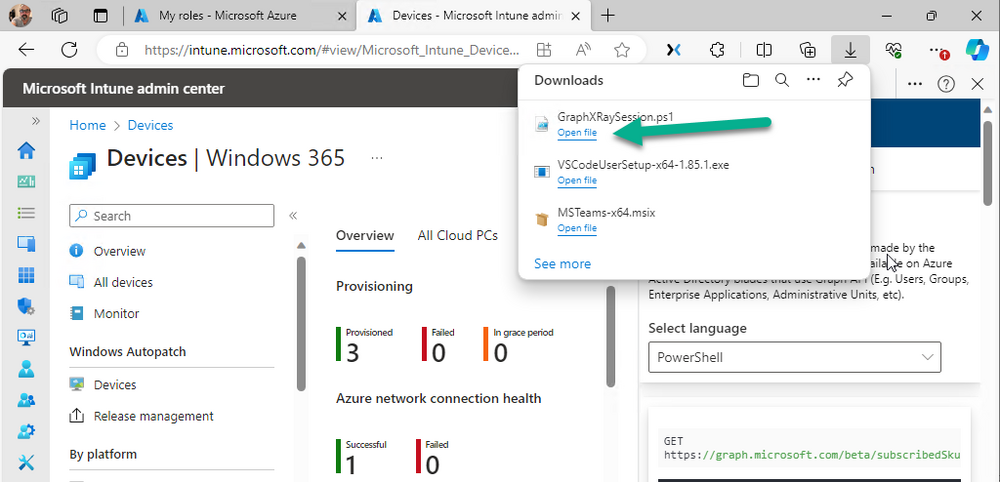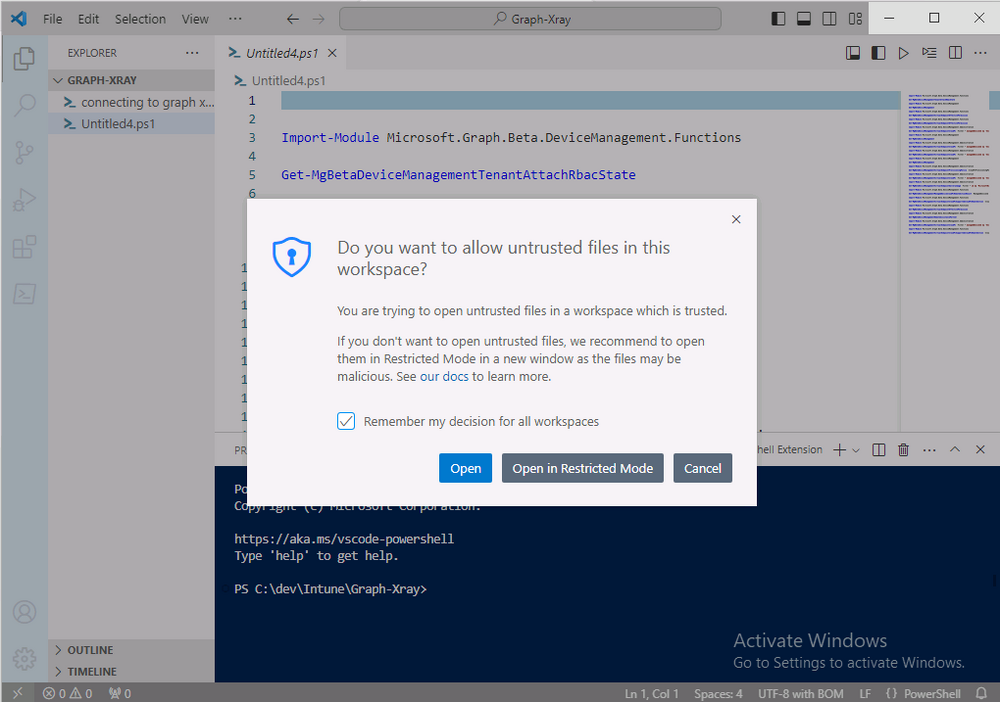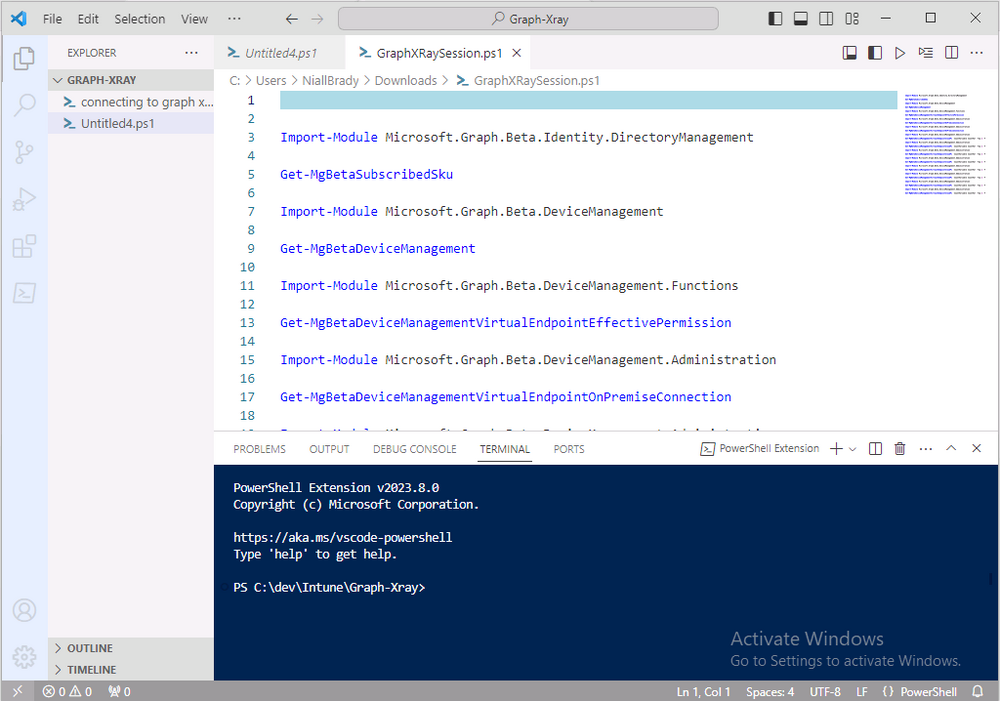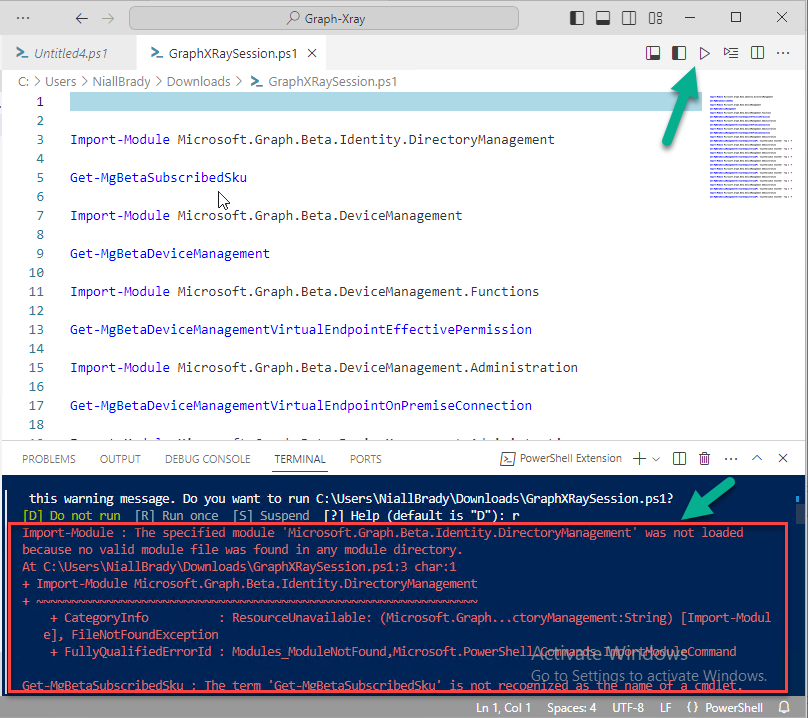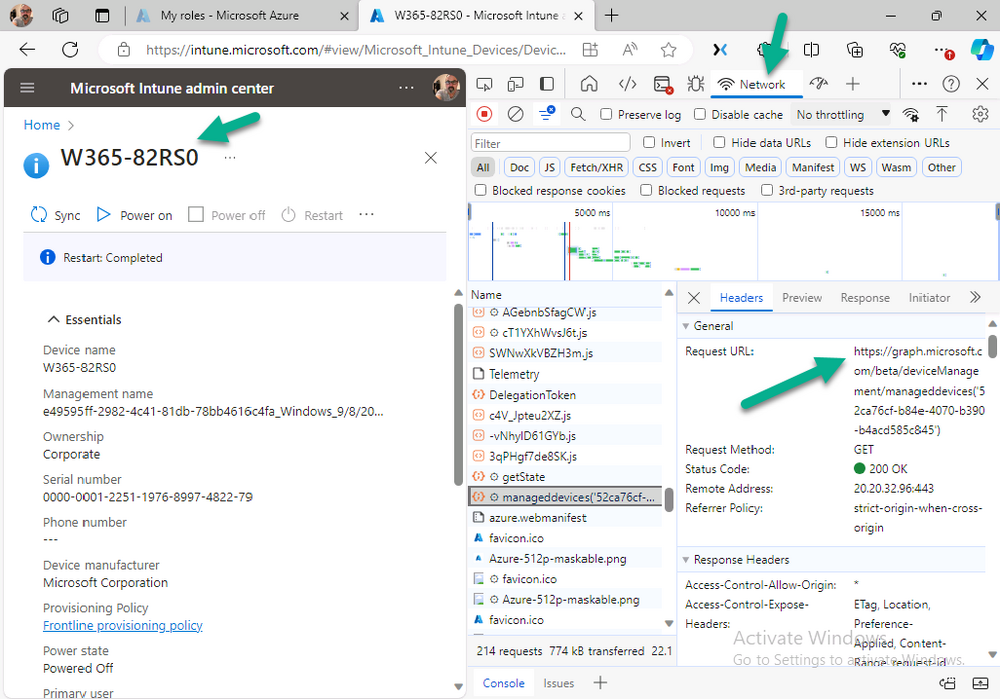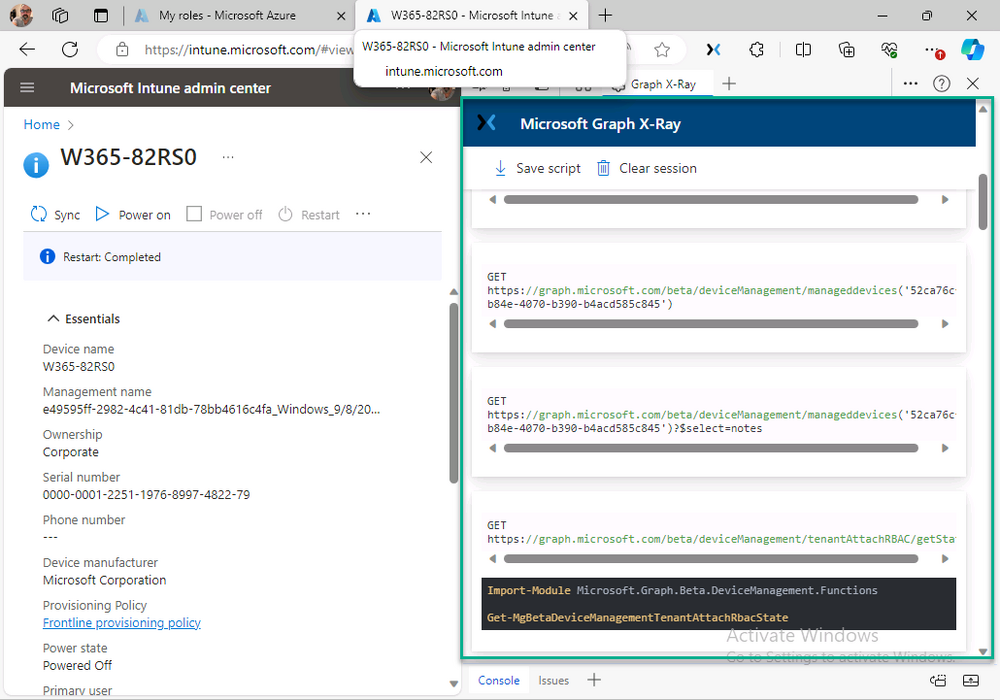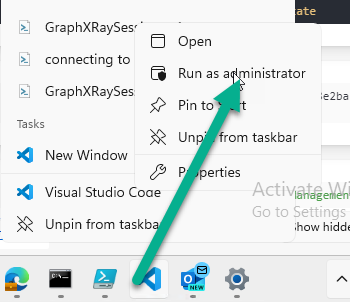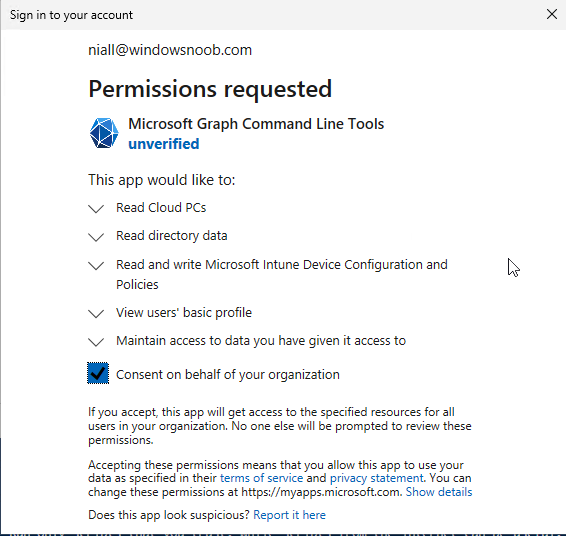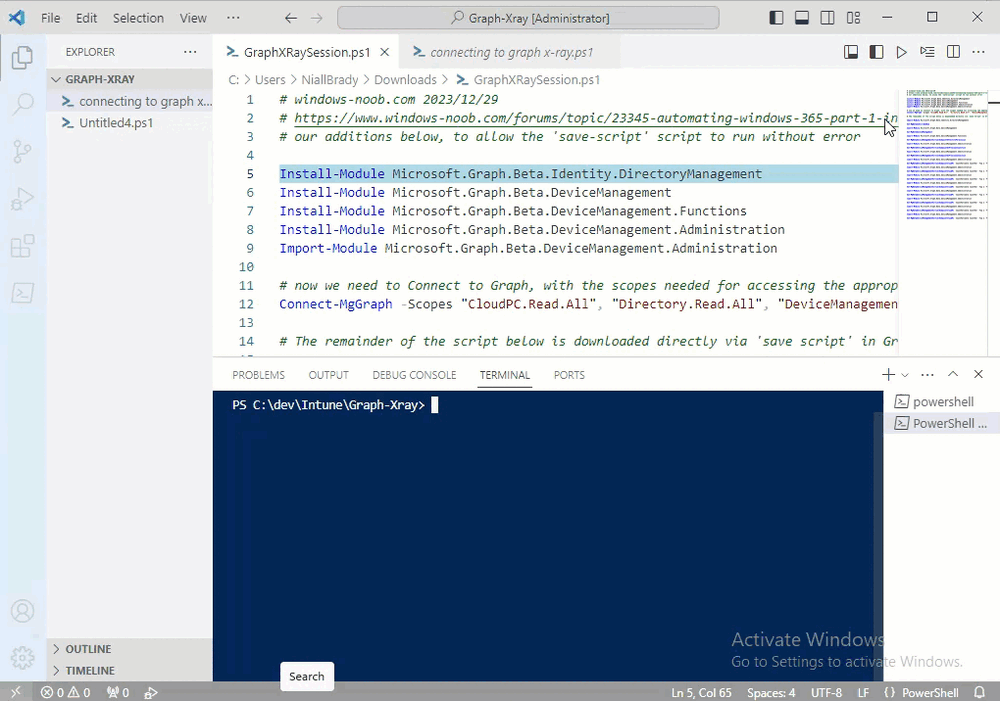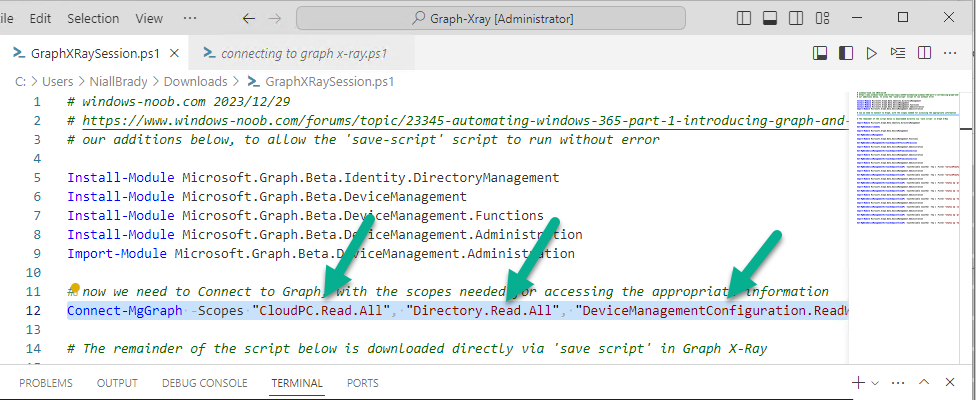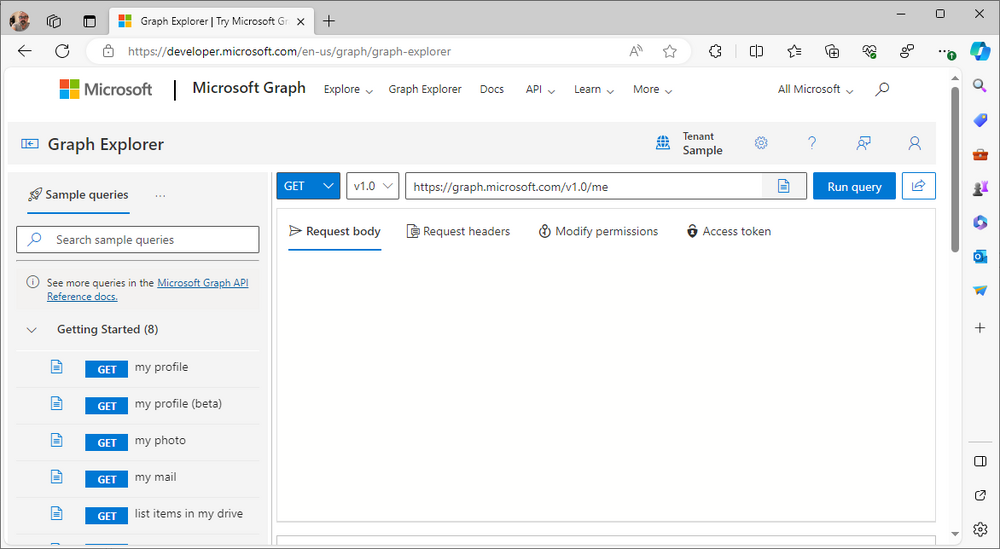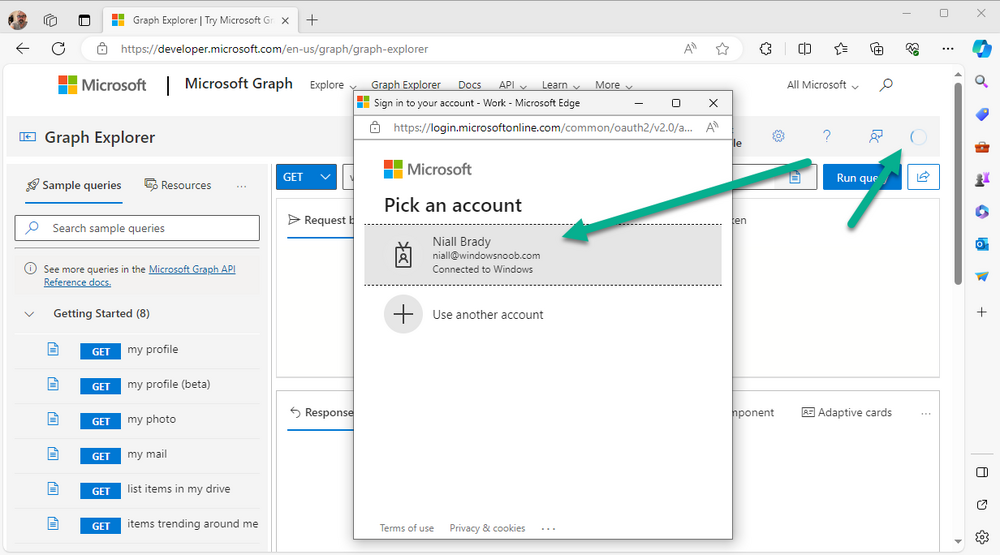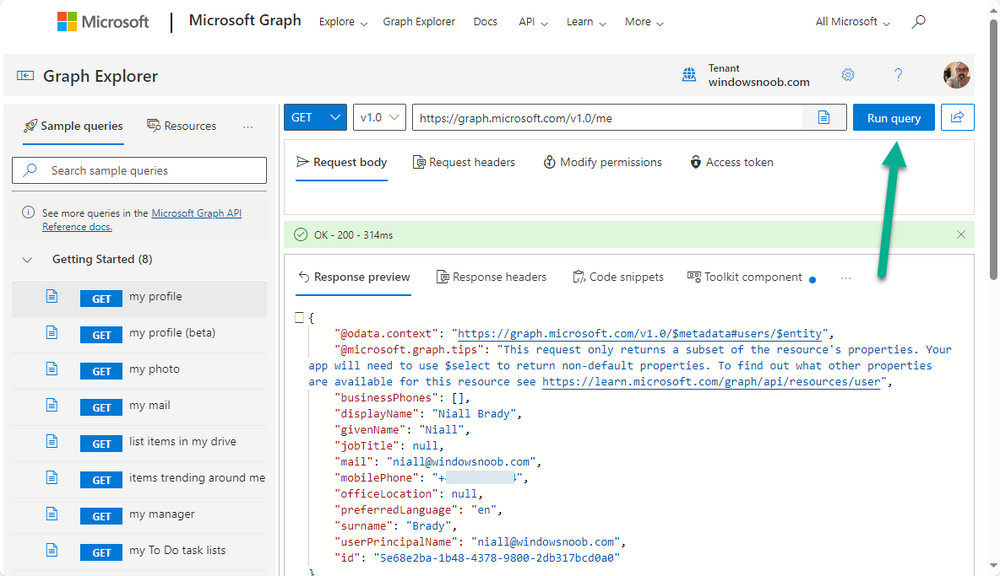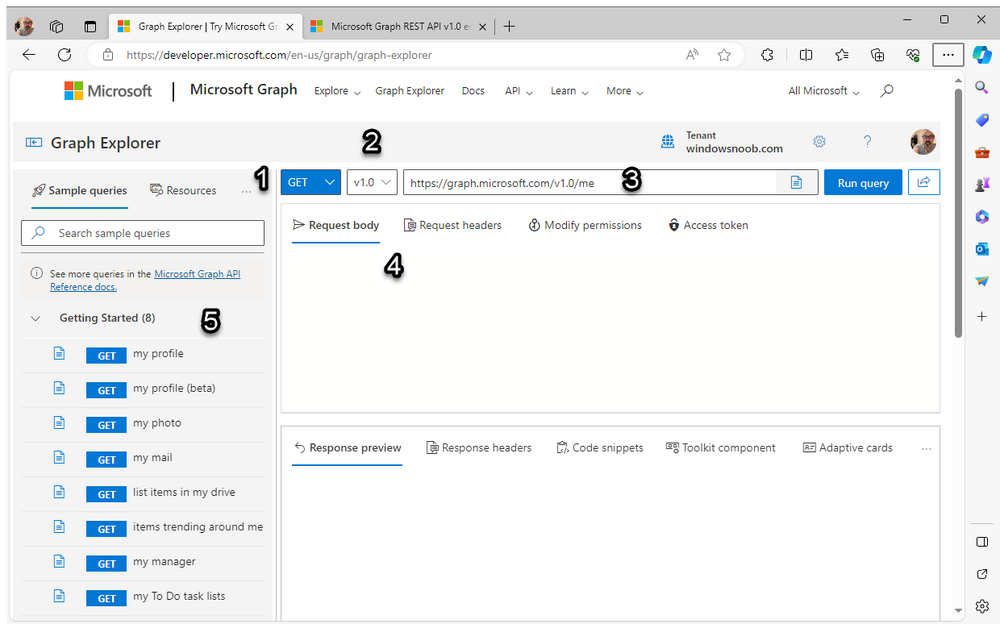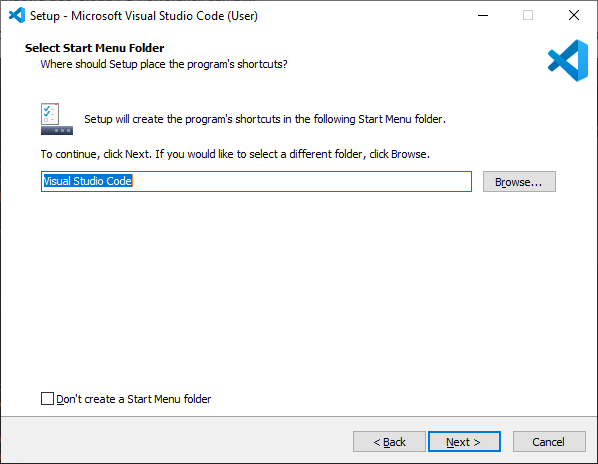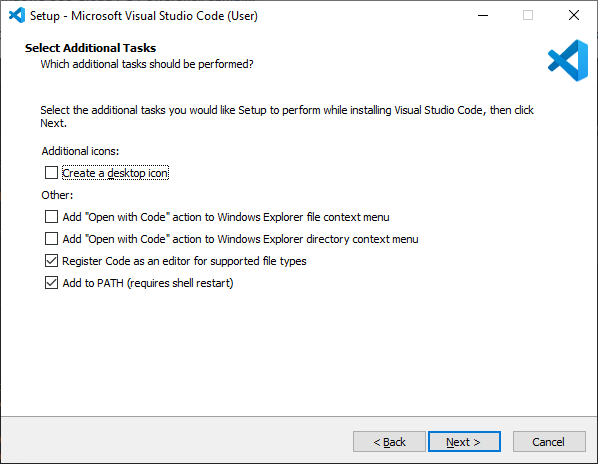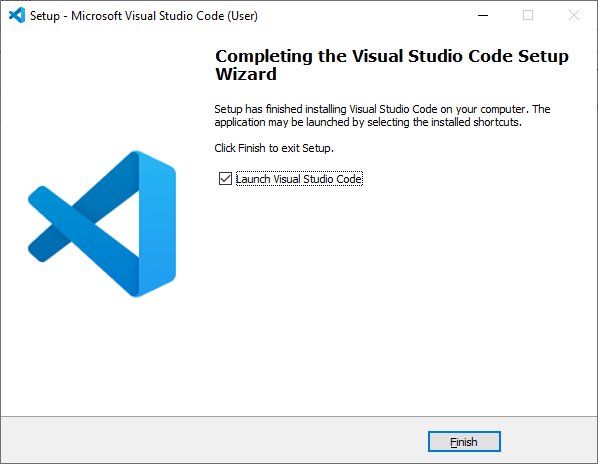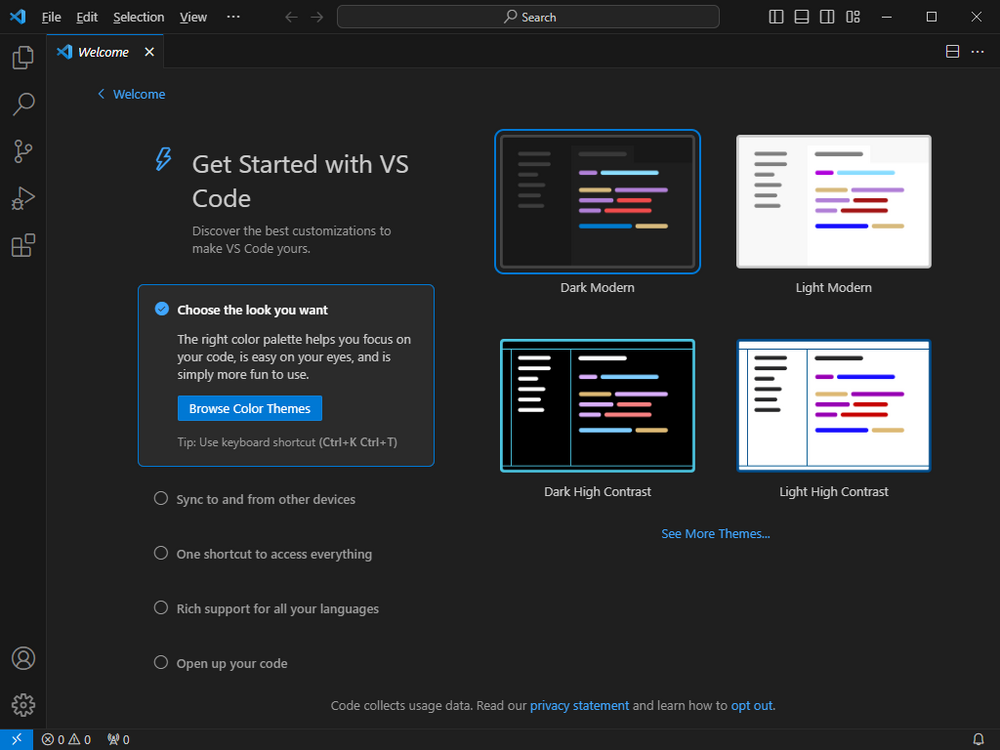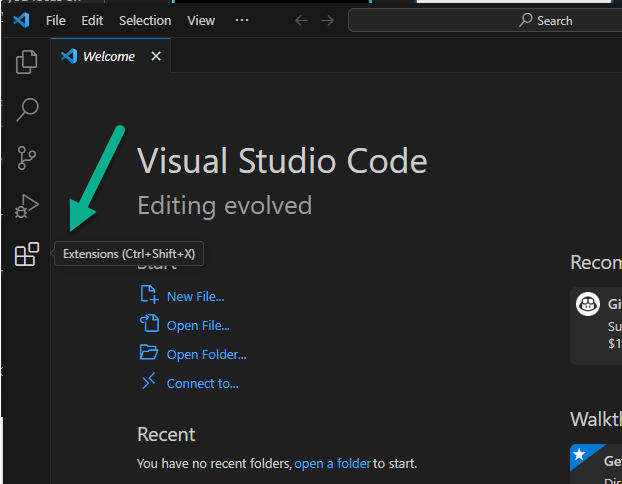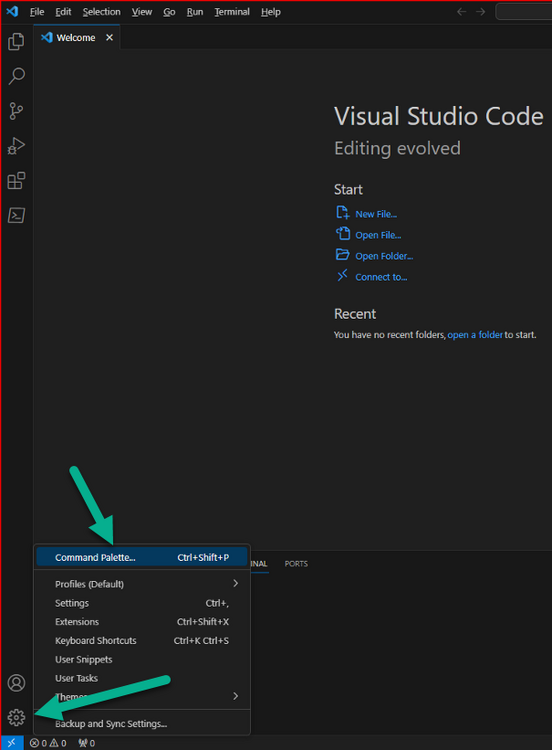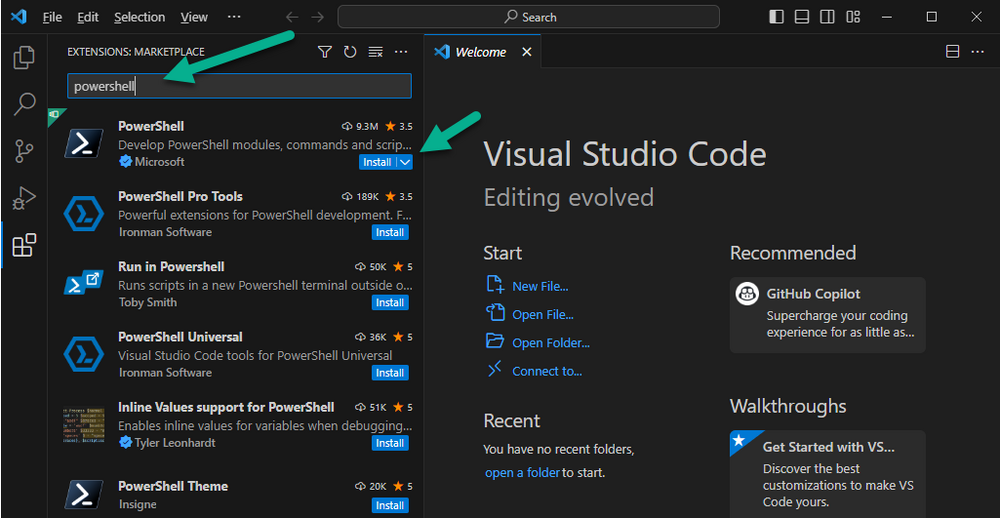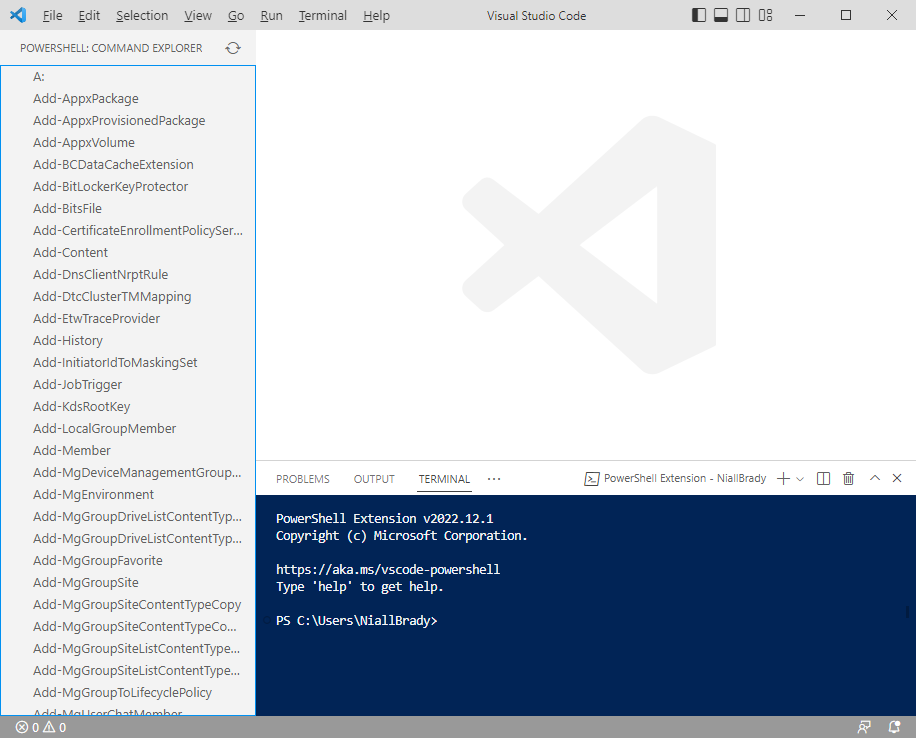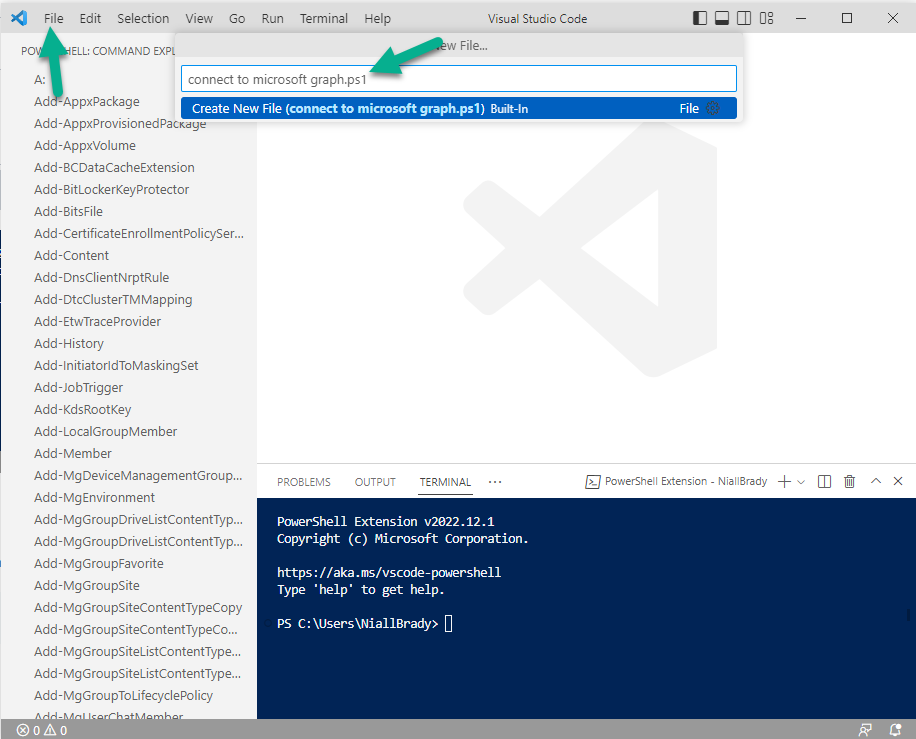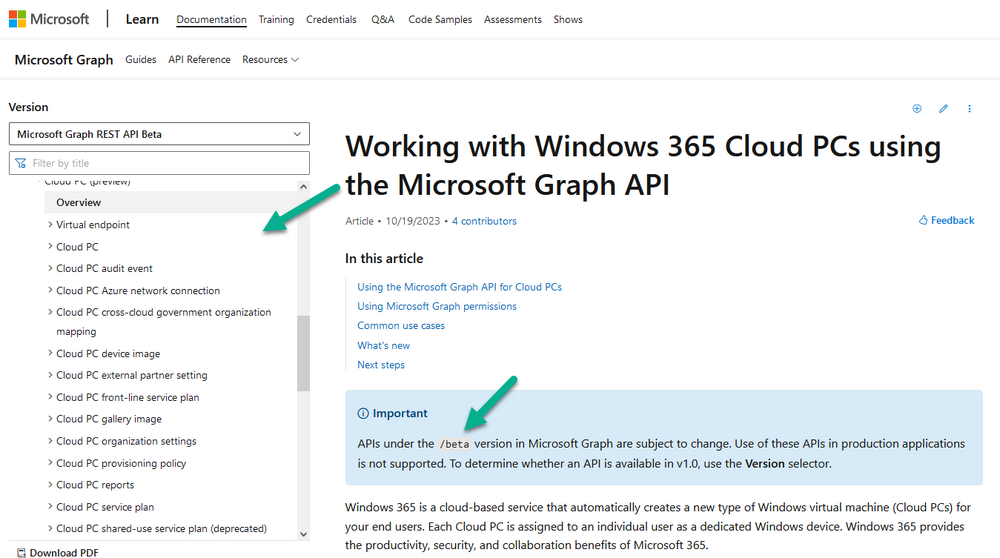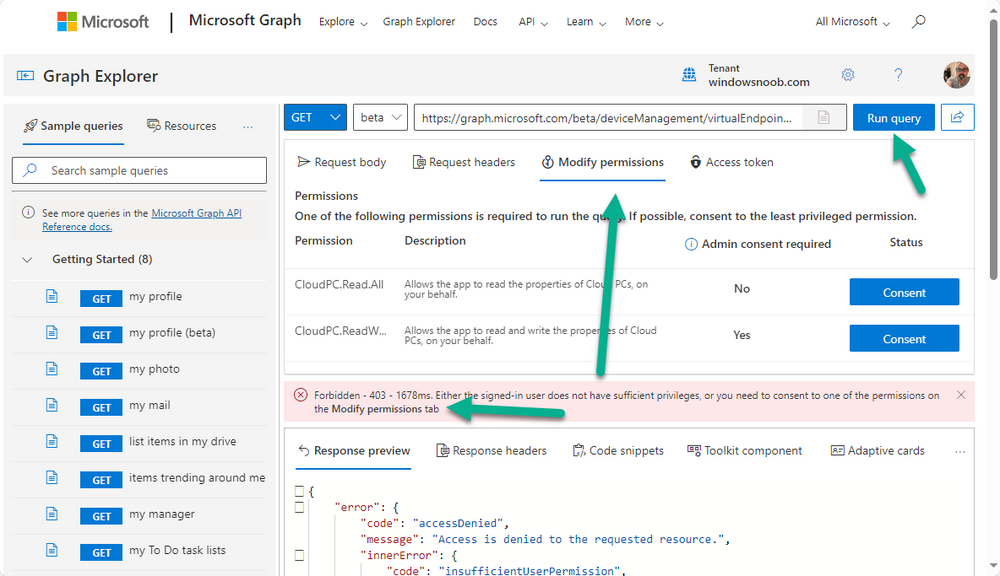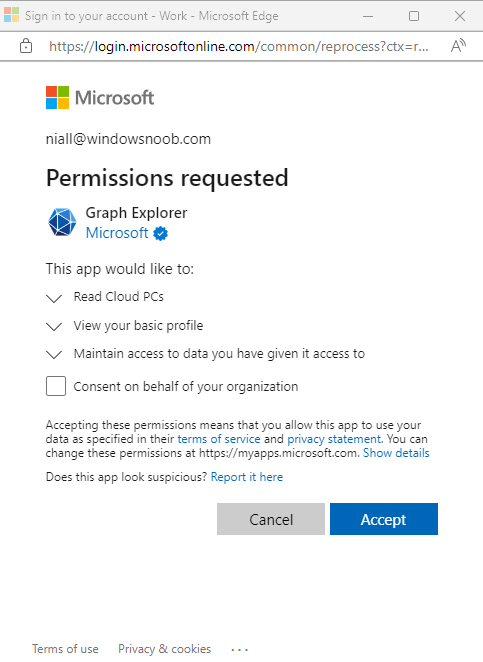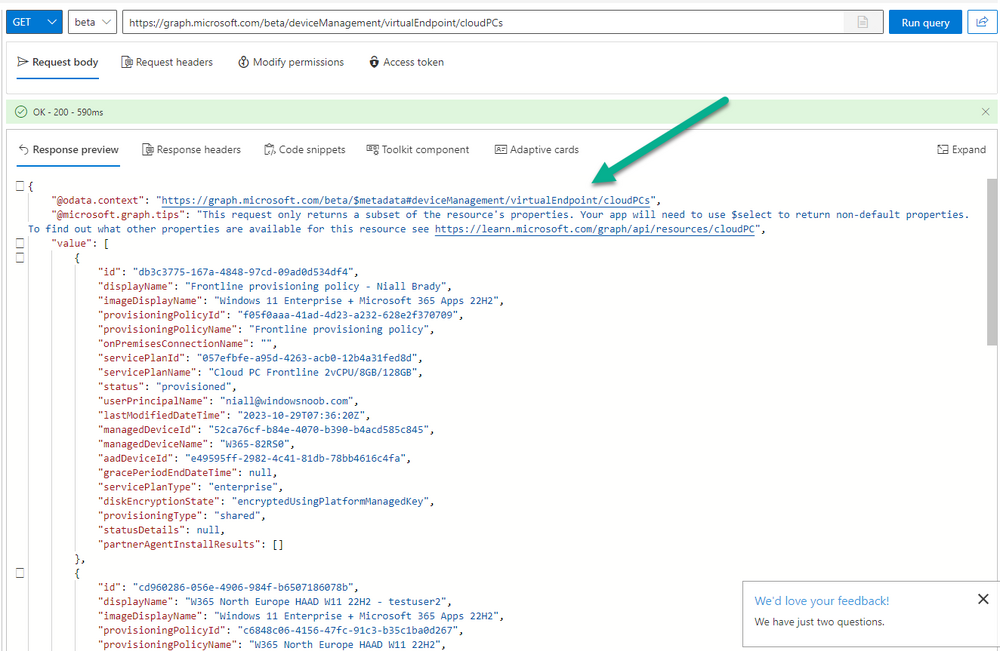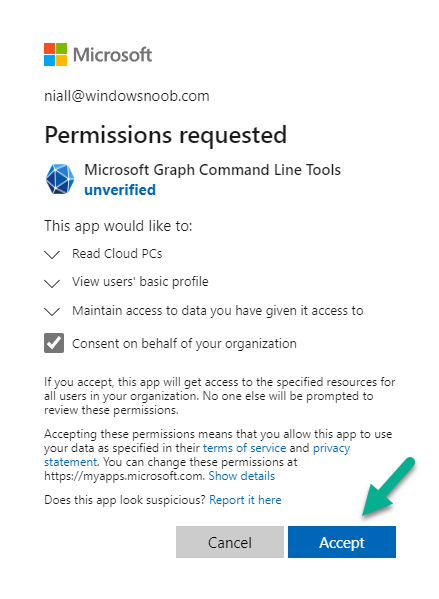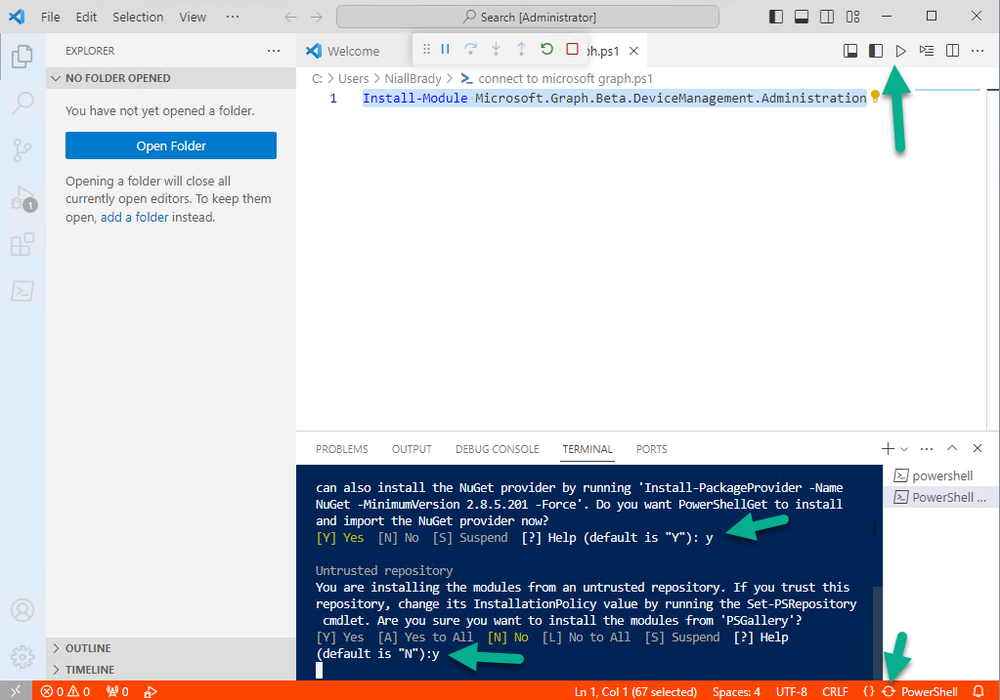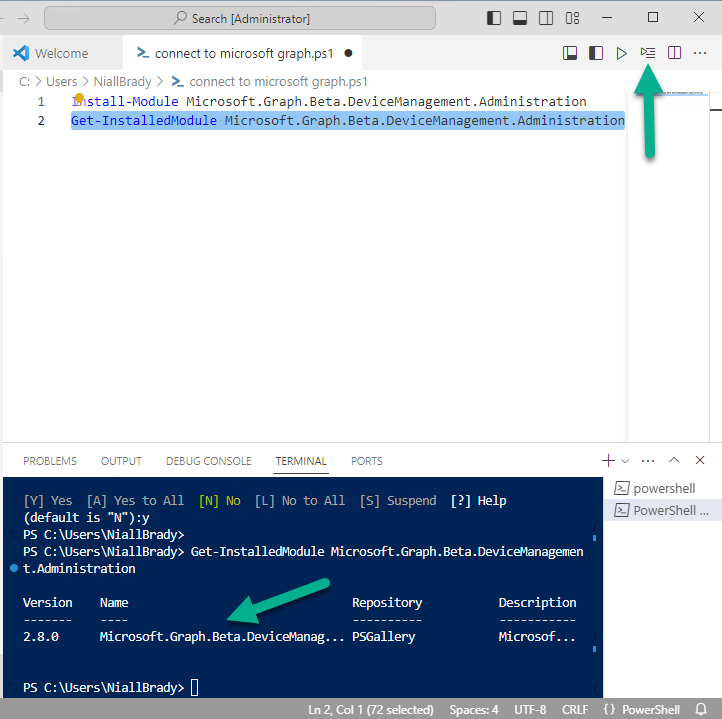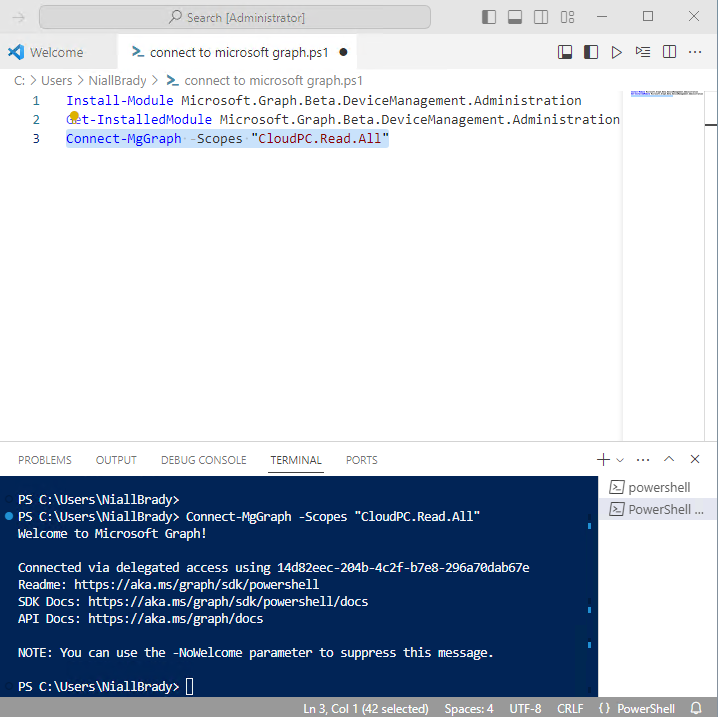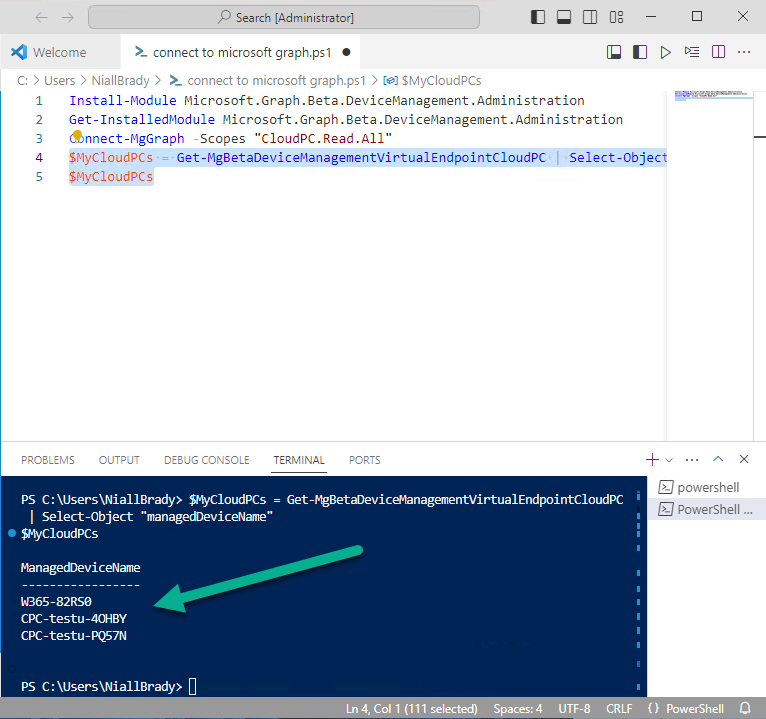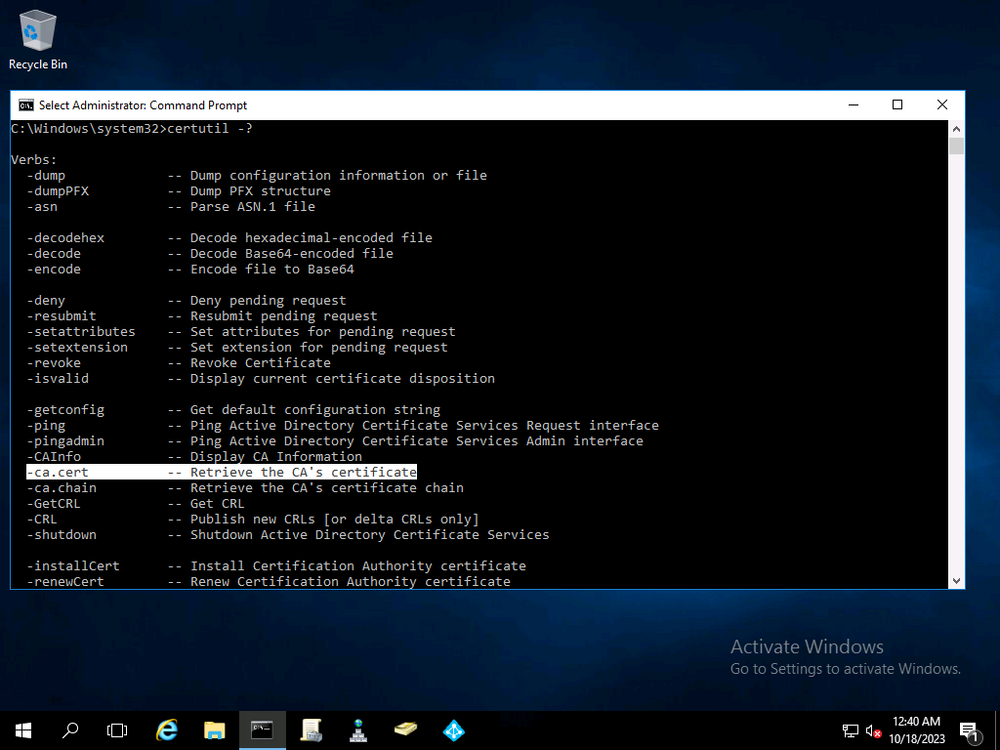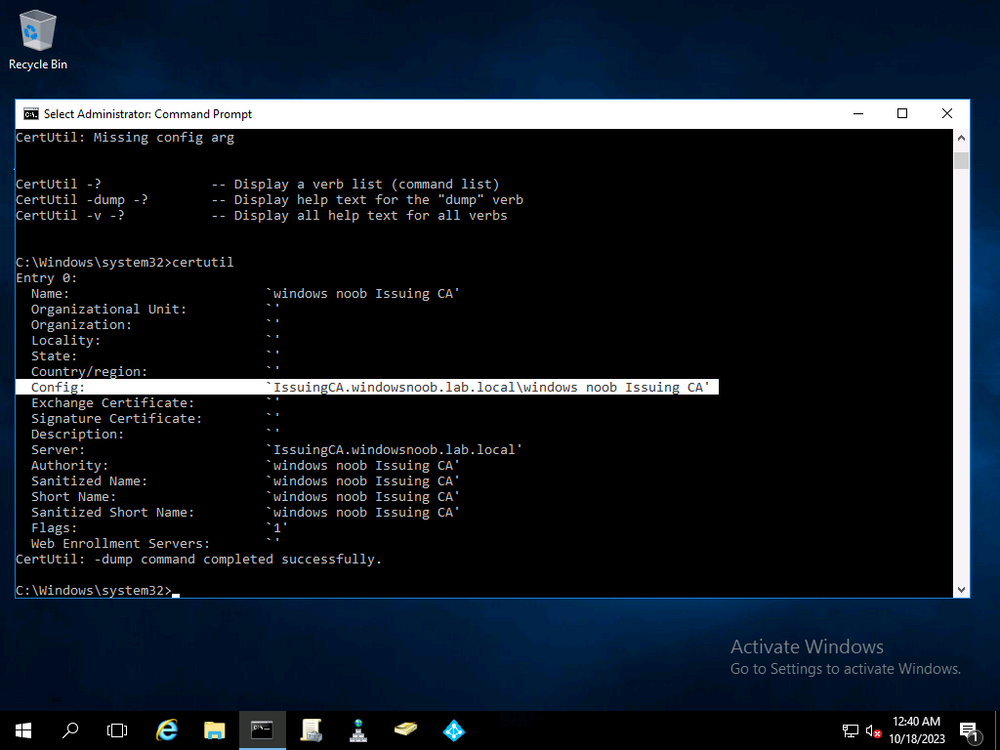-
Posts
9251 -
Joined
-
Last visited
-
Days Won
369
Everything posted by anyweb
-
you could have a detection script for the KB like so, change the kb number to whatever kb you are looking for # niall brady 2023/10/04 # check if the KB is actually installed # $result = systeminfo.exe | findstr KB5030310 if ($result){ write-output "Found KB5030310" exit 0} else { write-output "Could not find KB5030310" exit 1}
-

The deployment system cannot be started using PXE
anyweb replied to zhangyongcheng's topic in Configuration Manager 2012
i just checked my own x64 boot image and it's 1.8GB so the size is ok, mine downloads very fast in my lab environment, it could be your switches in the network that are slowing it down -

The deployment system cannot be started using PXE
anyweb replied to zhangyongcheng's topic in Configuration Manager 2012
hi, without more info about this it's hard to tell, has it always been 18 minutes ? is the distribution point hosting the boot image far away from the device you are pxe booting ? or is this only happening on specific models ? more info is needed please -

The deployment system cannot be started using PXE
anyweb replied to zhangyongcheng's topic in Configuration Manager 2012
no my point was, in order to see WHEN pxe boot started you need to get the timestamp from the smspxe.log then, compare that with the smsts.log and you can work out exactly how long that device took to boot to the PXE password prompt (if enabled) -

The deployment system cannot be started using PXE
anyweb replied to zhangyongcheng's topic in Configuration Manager 2012
there's nothing revealed here, it took a couple of minutes to launch WinPE, search the SMSPXE.log on the primary or pxe enabled dp for the mac address of this device to see when it really started PXE boot. -
there is no more x86 boot image in the Windows ADK and that is why it fails to update the x86 boot image, This is by design: The 32-bit versions of Windows PE (WinPE) in the WinPE add-ons for Windows 11 and Windows Server 2022 aren't supported. for more info and a possible workaround see here > https://learn.microsoft.com/en-us/answers/questions/892268/unable-to-update-x86-default-boot-image-after-upgr
-
Introduction This is Part 2 of a new series of guides which will cover managing Windows 365 Cloud PC's using PowerShell and Microsoft Graph. This mini series should help you get started with automating and managing your Cloud PC's using PowerShell via Microsoft Graph. If you are new to Windows 365 Cloud PC's then please read our previous series called Getting started with Windows 365 available here. At the time of writing, Paul is a 7 times Enterprise Mobility MVP based in the UK and Niall is a 13 times Enterprise Mobility & Windows and Devices MVP based in Sweden. Below you can find all parts in this series: Automating Windows 365 part 1 - Introducing Graph and setting up Visual Studio code Automating Windows 365 part 2 - Using Graph X-Ray <- you are here Automating Windows 365 part 3 - Provisioning Cloud PC's Automating Windows 365 part 4 - Managing your Cloud PC Automating Windows 365 part 5 - TBD In this part we'll cover the following: Introducing Graph X-Ray Installing Graph X-Ray Using the extension Running code produced by Graph X-Ray Related reading Summary Introducing Graph X-Ray Graph X-Ray is a web browser extension created by a bunch of very smart people at Microsoft including Merill Fernando (Senior Product Manager). It was designed as part of a hackathon project to work with various web-browsers including Google Chrome and Microsoft Edge running on Windows or MacOS. The extension gives you a sneak peek at the API calls that Graph is making when you do various actions in any app or console that uses Graph API. Graph X-Ray does more than the built in Network developer tools included with these web-browsers, for example, it simplifies some of the calls as well as giving you the commands in other programming languages. Below is a sample of data from Network developer tools output when viewing the details of a Windows 365 Cloud PC in Intune. Without filtering, you have to really dig through masses of data to find the Graph calls in the output. If we compare output of the same action using Graph X-Ray highlighted in the green box below, you can see it's much easier to comprehend and more useful for scripting a solution. In addition, it removes all the unnecessary information captured via Network developer tools and only shows the Graph calls we are interested in and if available the respective cmdlets that can be used to get that info using PowerShell. Graph X-Ray will definitely make your job easier when it comes to automating things with Windows 365, but it won't do all the work for you, so be prepared to get stuck in. Installing Graph X-Ray Installing Graph X-Ray is simple. You can download it directly from http://graphxray.merill.net or if using Microsoft Edge click here. After downloading the extension by clicking on Get, you'll need to Add the extension to your browser. Click on Add extension. You'll be informed of the progress. Using the extension After installing the extension (in Edge in our example), you can access it via Developer Tools by using the shortcut keys CTRL+SHIFT+I or by clicking on the 3 dots or ellipses (1) and then selecting More Tools (2) and finally clicking on Developer Tools (3) as per the picture below. Once done, click on + and then select the Graph X-Ray extension. The Graph X-Ray developer tool is now available in your web-browser. Once enabled, you can select the chosen language (PowerShell, C#, Java, JavaScript, Objective C or Go) by clicking on the drop down, we will focus on PowerShell examples only for this mini-series. As Graph X-Ray is focused on revealing hidden gems in apps/portals that use the Graph API, you can start seeing it's power by launching a portal such as Microsoft Intune (which uses the Graph API) to review some of the data it reveals about your Windows 365 Cloud PC's. So let's get started. Below we browsed to the Intune console and launch Graph X-Ray as shown above, next we clicked on the Windows 365 Provisioning node in Intune. The amount of data revealed is shown in the Graph X-Ray window. From that window you can copy snippets of code that interest you or save the entire script by clicking on Save script. And then you can open that script in Visual Studio Code If you get a warning about restricted spaces, make your choice to continue and the Graph X-Ray session script opens in Visual Studio Code. But remember even though we saved a script of what we were doing at the time (reviewing the Windows 365 node in Intune) it won't be enough to do everything that you just revealed. So let's dig deeper. Running code produced by Graph X-Ray Next, let's try and run some of the code produced by Graph X-Ray to see how it helps us. If we simply run the script downloaded above, the following occurs. Lots of errors in red highlighted in the screenshot below. As we said before, Graph X-Ray helps you but doesn't do everything. In the example errors highlighted above, we can see it's trying to import a module that isn't already installed, so to fix that you'll need to first install any module that is used in the script you are creating. To fix things in the downloaded script, close Visual Studio Code and restart it as Administrator, this is only needed to install those missing PowerShell modules. Once done, the edited script is shown below, note that we had to run it a few times and browse the output to see if there were any missing scopes. The scopes are added one after another in the script and when added, you'll be prompted to accept those new permissions. After Approving that, and running the script the output below shows all the data generated from the edited 'save script' content. Success ! Below is a copy of the script we edited in the GIF above. # windows-noob.com 2023/12/29 # https://www.windows-noob.com/forums/topic/23345-automating-windows-365-part-1-introducing-graph-and-setting-up-visual-studio-code/ # our additions below, to allow the 'save-script' script to run without error Install-Module Microsoft.Graph.Beta.Identity.DirectoryManagement Install-Module Microsoft.Graph.Beta.DeviceManagement Install-Module Microsoft.Graph.Beta.DeviceManagement.Functions Install-Module Microsoft.Graph.Beta.DeviceManagement.Administration Import-Module Microsoft.Graph.Beta.DeviceManagement.Administration # now we need to Connect to Graph, with the scopes needed for accessing the appropriate information Connect-MgGraph -Scopes "CloudPC.Read.All", "Directory.Read.All", "DeviceManagementConfiguration.ReadWrite.All" # The remainder of the script below is downloaded directly via 'save script' in Graph X-Ray Import-Module Microsoft.Graph.Beta.Identity.DirectoryManagement Get-MgBetaSubscribedSku Import-Module Microsoft.Graph.Beta.DeviceManagement Get-MgBetaDeviceManagement Import-Module Microsoft.Graph.Beta.DeviceManagement.Functions Get-MgBetaDeviceManagementVirtualEndpointEffectivePermission Import-Module Microsoft.Graph.Beta.DeviceManagement.Administration Get-MgBetaDeviceManagementVirtualEndpointOnPremiseConnection Import-Module Microsoft.Graph.Beta.DeviceManagement.Administration Get-MgBetaDeviceManagementVirtualEndpointOnPremiseConnection Import-Module Microsoft.Graph.Beta.DeviceManagement.Administration Get-MgBetaDeviceManagementVirtualEndpointCloudPc -CountVariable CountVar -Top 1 -Filter "servicePlanType eq 'enterprise'" Import-Module Microsoft.Graph.Beta.DeviceManagement.Administration Get-MgBetaDeviceManagementVirtualEndpointCloudPc -CountVariable CountVar -Top 1 -Filter "servicePlanType eq 'enterprise'" Import-Module Microsoft.Graph.Beta.DeviceManagement.Administration Get-MgBetaDeviceManagementVirtualEndpointCloudPc -CountVariable CountVar -Top 1 -Filter "status eq 'provisioned' and servicePlanType eq 'enterprise'" Import-Module Microsoft.Graph.Beta.DeviceManagement.Administration Get-MgBetaDeviceManagementVirtualEndpointCloudPc -CountVariable CountVar -Top 1 -Filter "status eq 'inGracePeriod' and servicePlanType eq 'enterprise'" Import-Module Microsoft.Graph.Beta.DeviceManagement.Administration Get-MgBetaDeviceManagementVirtualEndpointCloudPc -CountVariable CountVar -Top 1 -Filter "status eq 'failed' and servicePlanType eq 'enterprise'" Import-Module Microsoft.Graph.Beta.DeviceManagement.Administration Get-MgBetaDeviceManagementVirtualEndpointCloudPc -CountVariable CountVar -Top 1 -Filter "status eq 'inGracePeriod' and servicePlanType eq 'enterprise'" Import-Module Microsoft.Graph.Beta.DeviceManagement.Administration Get-MgBetaDeviceManagementVirtualEndpointCloudPc -CountVariable CountVar -Top 1 -Filter "status eq 'provisioned' and servicePlanType eq 'enterprise'" Import-Module Microsoft.Graph.Beta.DeviceManagement.Administration Get-MgBetaDeviceManagementVirtualEndpointCloudPc -CountVariable CountVar -Top 1 -Filter "status eq 'failed' and servicePlanType eq 'enterprise'" Keep in mind that you might want to edit the -Top 1 references to -Top 5 or some other figure to increase the output when making your own scripts based on the above. Related reading Introduction to Graph X-Ray Microsoft Graph Overview - https://learn.microsoft.com/en-us/graph/overview Microsoft Graph X-Ray Edge add-on - https://microsoftedge.microsoft.com/addons/detail/graph-xray/oplgganppgjhpihgciiifejplnnpodak PSCloudPC - https://pscloudpc.com/ Summary The Graph X-Ray extension is a fantastic tool to help you find out what is going on behind the scenes for Graph API tasks. Using the Graph X-Ray extension in your web browser makes it easier to automate many tasks for your Windows 365 Cloud PC's using PowerShell.
-
Introduction The Configuration Manager team at Microsoft have been busy and have released a new Technical Preview release, this time version 2311. This release has several new features but the one I find most interesting is the addition of ARM64 support for OSD. Configuration Manager first provided client support for ARM64 in Configuration Manager 2107 with the update rollup. ARM based devices running Windows are increasing. Microsoft have previously released ARM based hardware such as the Surface Pro X or Windows Developer kit 2023. I wouldn’t be surprised if Microsoft pushes out their own ARM64 chips soon, and having the support to re-image these ARM based hardware from Configuration Manager is a bonus. So what’s possible with this new ability in Configuration Manager ? Configuration Manager operating system deployment support is now added on Windows 11 Arm64 devices. Currently Importing and customizing Arm64 boot images, Wipe and load Task Sequence, Media creation Task sequence and WDS PXE for Arm64 is supported. To test it out you’d need ARM based hardware, which I don’t have, but I can at least download the ISO from Microsoft Volume License Servicing center (or from here) and then add it to TP2311. Install Windows 11 ADK (september 2023) But before doing that it was time to update Windows ADK to the latest version which is Windows 11 ADK (updated September 2023). This version of the ADK isn’t perfect as there are some known issues with OSD but it’s required for getting ARM64 OSD support to work. Previous versions can be imported but will fail to PXE boot. Download Windows 11 ADK here. After installing both that and the Windows PE environment, reboot the server. Update existing boot images After that, update your boot media and choose the option to reload the existing boot images with Windows PE from the installed ADK. Add ARM64 boot image Now it’s time to add the ARM64 boot media and for that you need to use the boot WIM file from the newly installed Windows 11 ADK. Thanks goes to fellow MVP Yutaro Tamai @ https://sccm.jp/ Twitter : tamai_pc for that tip. I copied the winpe.wim file from my ADK path shown above to my OSD sources folder and added that as the ARM64 boot image. after importing the boot image, don’t forget to make it available to your PXE environment. and review the SMSPXE.log file to see all goes well. Adding the Windows 11 ARM64 media Next, I downloaded the Windows 11 23H2 ARM64 ISO and added it to ConfigMgr. After importing the WIM file you can review its properties by clicking on the Images tab to verify that it’s ARM64 architecture. after importing the image it’s ready to be distributed to your dp’s and added to a task sequence. Modify task sequence Finally, modify an existing task sequence to use the ARM64 boot image and modify the Apply Operating System step to use the ARM64 Install.wim file. Finally you can test PXE boot. Unfortunately I currently don’t have any of that hardware available yet but once I do, i’ll give it a twirl and update this blog post. cheers niall
-
Introduction I got my hands on a test unit, a Microsoft Surface Go 4, and wanted to see if we could image it via SCCM as we currently are doing for Surface Go 3 models. However, the problems became apparent quickly. Problem The problems were lack of storage (no HDD detected) if using an Windows 10 ADK version 2004 that hasn’t been updated with the latest servicing stack and cumulative update to address CVE-2023-24932, or if using an ADK based on Windows 11, the partitioning steps hangs forever along with the other issues that ADK 11 has (preprovision bitlocker fails, no vbs support). So how to fix this ? The easiest choice was to grab the driver pack from Microsoft and inject the missing storufs.inf driver into the Windows 10 ADK version 2004 boot wim. So I went down what I thought was the path of least resistance. Download the drivers (MSI) You can download the MSI drivers for the Surface Go 4 from here, select the appropriate OS (Windows 10 or Windows 11). Extracting the drivers Once you’ve downloaded the MSI, you’ll want to extract the drivers from the pack, to do that use the cmdline below, replace it with the MSI name you want to extract and point it to the exact folder you want the drivers to extract to. Do not have any spaces between TARGETDIR and the = sign. MSIEXEC /a SurfaceGo4_Win10_19045_23.072.25310.0.msi /qb TARGETDIR=C:\drivers\SG4 But guess what, those UFS storage drivers are not available in the downloadable MSI. You will need to rip the needed drivers from the factory image so keep that in mind before you blow it away. I found the needed files in the following folder on the factory install: C:\Windows\Inf The drivers and were dated 2023/04/13 on my example unit, and the needed are: storufs.inf storufs.sys However even with those files it’s not enough, you cannot import them into the boot.wim image as they are not signed (missing the CAT file). And the necessary CAT file is nowhere to be found in the factory install image. So we are back to square one. I asked Microsoft to provide me with this signed driver but for some reason was declined. Instead they advised me to patch the boot images. The solution To fix this you’ll need to patch your ADK 10 version 2004 boot wim to include the latest SSU and CU updates. In my testing that was the October CU. Here’s the script used, yes it’s a batch file but it works just fine, there is a PowerShell script available from Microsoft (here) but you’ll need to modify it heavily before starting. Copy the downloaded CU to the appropriate folder before starting REM use this to patch ADK 2004 with latest CU/SSU/optional components REM to start with, copy the CU to C:\dev\patch_winpe\CU REM make sure to REMOVE any pre-existing C:\winpe_amd64 before starting! REM thanks to Microsoft for the script, modified by Niall Brady, 2023/11/23 REM - > copy a fresh boot.wim without any component (you can use the boot.wim from your Configuration Manager Installation as well to start with) REM CLEANUP if needed! DISM.exe /Unmount-Wim /MountDir:C:\winpe_amd64\mount /discard DISM.exe /Cleanup-Wim call "C:\Program Files (x86)\Windows Kits\10\Assessment and Deployment Kit\Windows Preinstallation Environment\copype.cmd" amd64 c:\winpe_amd64 REM - Create some temp folders... MD c:\winpe_amd64\SSU MD c:\winpe_amd64\CU MD c:\winpe_amd64\temp REM - > expand SSU expand.exe C:\dev\patch_winpe\CU\windows10.0-kb5031356-x64_65d5bbc39ccb461472d9854f1a370fe018b79fcc.msu -f:*ssu*.cab c:\winpe_amd64\SSU REM - > expand CU expand.exe C:\dev\patch_winpe\CU\windows10.0-kb5031356-x64_65d5bbc39ccb461472d9854f1a370fe018b79fcc.msu -f:*Windows*x64.cab c:\winpe_amd64\CU REM - > mount the boot.wim file for servicing operations dism.exe /Mount-Wim /WimFile:C:\winpe_amd64\media\sources\boot.wim /index:1 /MountDir:C:\winpe_amd64\mount REM - > Apply SSU dism.exe /image:C:\winpe_amd64\mount\ /Add-Package /PackagePath:c:\winpe_amd64\SSU\ REM - > adding the core components (bare minimum requirement by Configuration Manager) REM Scripting (WinPE-WMI) dism.exe /Add-Package /Image:"C:\winpe_amd64\mount" /PackagePath:"c:\program files (x86)\Windows Kits\10\Assessment and Deployment Kit\Windows Preinstallation Environment\amd64\WinPE_OCs\WinPE-WMI.cab" dism.exe /Add-Package /Image:"C:\winpe_amd64\mount" /PackagePath:"c:\program files (x86)\Windows Kits\10\Assessment and Deployment Kit\Windows Preinstallation Environment\amd64\WinPE_OCs\en-us\WinPE-WMI_en-us.cab" REM Scripting (WinPE-Scripting) dism.exe /Add-Package /Image:"C:\winpe_amd64\mount" /PackagePath:"c:\program files (x86)\Windows Kits\10\Assessment and Deployment Kit\Windows Preinstallation Environment\amd64\WinPE_OCs\WinPE-Scripting.cab" dism.exe /Add-Package /Image:"C:\winpe_amd64\mount" /PackagePath:"c:\program files (x86)\Windows Kits\10\Assessment and Deployment Kit\Windows Preinstallation Environment\amd64\WinPE_OCs\en-us\WinPE-Scripting_en-us.cab" REM Network (WinPE-WDS-Tools) dism.exe /Add-Package /Image:"C:\winpe_amd64\mount" /PackagePath:"c:\program files (x86)\Windows Kits\10\Assessment and Deployment Kit\Windows Preinstallation Environment\amd64\WinPE_OCs\WinPE-WDS-Tools.cab" dism.exe /Add-Package /Image:"C:\winpe_amd64\mount" /PackagePath:"c:\program files (x86)\Windows Kits\10\Assessment and Deployment Kit\Windows Preinstallation Environment\amd64\WinPE_OCs\en-US\WinPE-WDS-Tools_en-us.cab" REM Startup (WinPE-SecureStartup) dism.exe /Add-Package /Image:"C:\winpe_amd64\mount" /PackagePath:"c:\program files (x86)\Windows Kits\10\Assessment and Deployment Kit\Windows Preinstallation Environment\amd64\WinPE_OCs\WinPE-SecureStartup.cab" dism.exe /Add-Package /Image:"C:\winpe_amd64\mount" /PackagePath:"c:\program files (x86)\Windows Kits\10\Assessment and Deployment Kit\Windows Preinstallation Environment\amd64\WinPE_OCs\en-us\WinPE-SecureStartup_en-us.cab" REM - > adding optional / additional components (do not forget to add them, if needed) REM HTML (WinPE-HTA) REM dism.exe /Add-Package /Image:"C:\winpe_amd64\mount" /PackagePath:"c:\program files (x86)\Windows Kits\10\Assessment and Deployment Kit\Windows Preinstallation Environment\amd64\WinPE_OCs\WinPE-HTA.cab" REM dism.exe /Add-Package /Image:"C:\winpe_amd64\mount" /PackagePath:"c:\program files (x86)\Windows Kits\10\Assessment and Deployment Kit\Windows Preinstallation Environment\amd64\WinPE_OCs\en-us\WinPE-HTA_en-us.cab" REM Database (WinPE-MDAC) REM dism.exe /Add-Package /Image:"C:\winpe_amd64\mount" /PackagePath:"c:\program files (x86)\Windows Kits\10\Assessment and Deployment Kit\Windows Preinstallation Environment\amd64\WinPE_OCs\WinPE-MDAC.cab" REM dism.exe /Add-Package /Image:"C:\winpe_amd64\mount" /PackagePath:"c:\program files (x86)\Windows Kits\10\Assessment and Deployment Kit\Windows Preinstallation Environment\amd64\WinPE_OCs\en-us\WinPE-MDAC_en-us.cab" REM Storage (WinPE-EnhancedStorage) REM dism.exe /Add-Package /Image:"C:\winpe_amd64\mount" /PackagePath:"c:\program files (x86)\Windows Kits\10\Assessment and Deployment Kit\Windows Preinstallation Environment\amd64\WinPE_OCs\WinPE-EnhancedStorage.cab" REM dism.exe /Add-Package /Image:"C:\winpe_amd64\mount" /PackagePath:"c:\program files (x86)\Windows Kits\10\Assessment and Deployment Kit\Windows Preinstallation Environment\amd64\WinPE_OCs\en-us\WinPE-EnhancedStorage_en-us.cab" REM Microsoft .NET (WinPE-NetFx) REM dism.exe /Add-Package /Image:"C:\winpe_amd64\mount" /PackagePath:"c:\program files (x86)\Windows Kits\10\Assessment and Deployment Kit\Windows Preinstallation Environment\amd64\WinPE_OCs\WinPE-NetFx.cab" REM dism.exe /Add-Package /Image:"C:\winpe_amd64\mount" /PackagePath:"c:\program files (x86)\Windows Kits\10\Assessment and Deployment Kit\Windows Preinstallation Environment\amd64\WinPE_OCs\en-us\WinPE-NetFx_en-us.cab" REM Windows PowerShell (WinPE-PowerShell) - this requires WinPE-NetFx to be added first REM dism.exe /Add-Package /Image:"C:\winpe_amd64\mount" /PackagePath:"c:\program files (x86)\Windows Kits\10\Assessment and Deployment Kit\Windows Preinstallation Environment\amd64\WinPE_OCs\WinPE-PowerShell.cab" REM dism.exe /Add-Package /Image:"C:\winpe_amd64\mount" /PackagePath:"c:\program files (x86)\Windows Kits\10\Assessment and Deployment Kit\Windows Preinstallation Environment\amd64\WinPE_OCs\en-us\WinPE-PowerShell_en-us.cab" REM Windows PowerShell (WinPE-DismCmdlets) - this requires WinPE-PowerShell to be added first REM dism.exe /Add-Package /Image:"C:\winpe_amd64\mount" /PackagePath:"c:\program files (x86)\Windows Kits\10\Assessment and Deployment Kit\Windows Preinstallation Environment\amd64\WinPE_OCs\WinPE-DismCmdlets.cab" REM dism.exe /Add-Package /Image:"C:\winpe_amd64\mount" /PackagePath:"c:\program files (x86)\Windows Kits\10\Assessment and Deployment Kit\Windows Preinstallation Environment\amd64\WinPE_OCs\en-us\WinPE-DismCmdlets_en-us.cab" REM Windows PowerShell (WinPE-StorageWMI) - this requires WinPE-PowerShell to be added first REM dism.exe /Add-Package /Image:"C:\winpe_amd64\mount" /PackagePath:"c:\program files (x86)\Windows Kits\10\Assessment and Deployment Kit\Windows Preinstallation Environment\amd64\WinPE_OCs\WinPE-StorageWMI.cab" REM dism.exe /Add-Package /Image:"C:\winpe_amd64\mount" /PackagePath:"c:\program files (x86)\Windows Kits\10\Assessment and Deployment Kit\Windows Preinstallation Environment\amd64\WinPE_OCs\en-us\WinPE-StorageWMI_en-us.cab" REM Windows Secure Boot Cmdlets (WinPE-SecureBootCmdlets) - this requires WinPE-PowerShell to be added first REM dism.exe /Add-Package /Image:"C:\winpe_amd64\mount" /PackagePath:"c:\program files (x86)\Windows Kits\10\Assessment and Deployment Kit\Windows Preinstallation Environment\amd64\WinPE_OCs\WinPE-SecureBootCmdlets.cab" REM dism.exe /Add-Package /Image:"C:\winpe_amd64\mount" /PackagePath:"c:\program files (x86)\Windows Kits\10\Assessment and Deployment Kit\Windows Preinstallation Environment\amd64\WinPE_OCs\en-us\WinPE-SecureBootCmdlets_en-us.cab" REM - > Apply CU dism.exe /image:C:\winpe_amd64\mount\ /Add-Package /PackagePath:c:\winpe_amd64\CU\ REM pause here to add any custom stuff pause REM - > final step unmount the boot.wim and commit the changes dism.exe /unmount-Wim /MountDir:C:\winpe_amd64\mount /commit After patching the boot.wim, import it back into SCCM, distribute it to your distribution points and attach it to your task sequence. Note: Keep in mind that you’ll also need the patched version of Windows 10/Windows 11 operating system wim file to the same CU level otherwise you’ll get a BSOD after applying the image. I hope this helps someone cheers niall Related reading Surface Go 4 drivers (MSI) – download October 2023 CU – download Windows 11 ADK 22H2 – download Surface Recovery Image download – Surface Recovery Image Download – Microsoft Support PowerShell script to modify boot images Manage boot images for CVE-2023-24932
-
interesting! thanks for updating the thread
-
weird, is the file blocked or corrupt in any way ?
-
Introduction This is Part 1 of a new series of guides which will cover managing Windows 365 Cloud PC's using PowerShell and Microsoft Graph. This mini series should help you get started with automating and managing your Cloud PC's using PowerShell via Microsoft Graph. If you are new to Windows 365 Cloud PC's then please read our previous series called Getting started with Windows 365 available here. At the time of writing, Paul is a 7 times Enterprise Mobility MVP based in the UK and Niall is a 13 times Enterprise Mobility & Windows and Devices MVP based in Sweden. Below you can find all parts in this series: Automating Windows 365 part 1 - Introducing Graph and setting up Visual Studio code <- you are here Automating Windows 365 part 2 - Using Graph X-Ray Automating Windows 365 part 3 - Provisioning Cloud PC's Automating Windows 365 part 4 - Managing your Cloud PC Automating Windows 365 part 5 - TBD In this part we'll cover the following: Introducing Graph Setup Visual Studio Code Installing Visual Studio Code Installing the PowerShell Extension Enabling ISEMode Initial connection to Graph Permissions Testing permissions using Graph Explorer Related reading Summary Introducing Graph Microsoft have summarized Graph as: ChatGPT summarized it as follows: OK so now we know that we can use Microsoft Graph to our advantage, to interact with data that we have access to and build scripts and apps to automate common tasks. But before we do let's take a look at one quick way of interacting with Graph, and that is via an online tool called Microsoft Graph Explorer which in turn uses the Graph API. Microsoft Graph Explorer lets you make requests and see responses against Microsoft Graph. To launch Graph Explorer click here. You'll be presented with a view such as below. Login to your tenant If you are new to Graph Explorer, there are a few things to keep in mind: 1. Allows you to select the method, eg: GET, POST, PUT, PATCH, DELETE 2. Select the context: v1.0 or beta 3. The address of your API call, including any variables or filters 4. Tabs containing more info 5. Sub set of Graph REST API examples Now you are ready to perform your first query, so go with the default selection and click on Run Query As you can see it returns a lot of data which we can use in our automation. Cool! Setting up Visual Studio Code Now that we know a little bit about Microsoft Graph, the next step is to install and configure a tool to connect with it effectively, and to do that we'll use Visual Studio Code. Visual Studio Code is more powerful and feature rich than the built in free PowerShell Integrated Scripting engine in Windows (PowerShell ISE) so let's use it. Installing Visual Studio Code It's free, to get started you'll need to download it first - https://code.visualstudio.com/docs/?dv=win Once downloaded, launch the executable to start setup. select your options and it's done. Click on Finish to launch Visual Studio Code. Installing the PowerShell Extension After installation, it's time to add a PowerShell extension. Click on Extensions. Search for PowerShell and click on Install Connect with Visual Studio Code Once you've installed the PowerShell extension, close Visual Studio Code and launch it again as an Administrator (Run As Administrator). Click on the Settings icon, and choose Command Palette Search for IseMode and select Enable IseMode from the list of choices This will force Visual Studio Code to look like PowerShell ISE. Initial connection to Graph Now we have everything in place, let's create our first script to make our initial connection to Graph from Visual Studio Code. To do that, click on File, give your script a suitable name such as connect to microsoft graph.ps1 Visual Studio Code now knows how to deal with the PowerShell commands as we've installed the PowerShell extension. Type in the following command: Install-Module Microsoft.Graph.Beta.DeviceManagement.Administration Once done, click on the run symbol (triangle) and notice the question. After answering Yes, PowerShell will start downloading the needed bits. After it has finished installing you can verify by running the following code Get-InstalledModule Microsoft.Graph.Beta.DeviceManagement.Administration You can do that in Visual Studio Code by typing the command, selecting it and then running the selected code. Finally, we want to connect to our installed module by using the the Connect-MgGraph command. Connect-MgGraph -Scopes "CloudPC.Read.All" You may get prompted for permissions (more on that below), if so click Accept. If required, you can also select the check box "Consent on behalf of your organization" to make it easier for other admins to do the same requests. Permissions In order to access the wealth of data in Microsoft Graph you'll need to provide permissions. For Cloud PC management, we can add an initial subset of permissions to review data. To review the permissions see the Graph API Documentation for what permissions are needed, keep in mind that these are currently in Beta and subject to change. Those permissions are basically broken down into three areas, License, Group and Cloud PC License permissions User.ReadWrite.All Directory.ReadWrite.All Group permissions GroupMember.ReadWrite.All, Group.ReadWrite.All Directory.ReadWrite.All CloudPC permissions CloudPC.ReadWrite.All Testing permissions using Graph Explorer Launch Graph Explorer. To verify our permissions we'll try a simple Cloud PC related task, List all Cloud PCs. To list all your Cloud PC's using Graph Explorer and Microsoft Graph API, try the following. GET https://graph.microsoft.com/beta/deviceManagement/virtualEndpoint/cloudPCs You'll probably see permission errors if they are not yet set or if you have not yet elevated your role in Azure (PIM). Notice how it helpfully points us to the Modify Permissions tab. As an account that has permissions to grant consent, click on Consent for the permissions listed. You'll get one or more prompts to accept these permissions and you can revoke them at any time. Again, if required, you can also select the check box "Consent on behalf of your organization" to make it easier for other admins to do the same requests. After consenting to the permissions and running the query again in Graph Explorer, the result is shown. Note that it's only a subset of the available info and it informs you that if you want more data you'll need to modify the request to include $select to return non-default properties. So now we've seen how to modify the permissions to review Cloud PC data in Graph Explorer, let's gather the same data using Visual Studio Code and a PowerShell cmdlet for Cloud PC. In addition, we'll filter on the managedDeviceName property shown in the output above so that it will only list that data. $MyCloudPCs = Get-MgBetaDeviceManagementVirtualEndpointCloudPC | select-object "managedDeviceName" $MyCloudPCs and here's the output: Success ! Related reading Overview of Microsoft Graph -https://learn.microsoft.com/en-us/graph/overview Graph Explorer API - https://developer.microsoft.com/en-us/graph/graph-explorer Working with Windows 365 Cloud PCs using the Microsoft Graph API - https://learn.microsoft.com/en-us/graph/api/resources/cloudpc-api-overview?view=graph-rest-beta Download Visual Studio Code - https://code.visualstudio.com/docs/?dv=win Permissions - https://learn.microsoft.com/en-us/graph/permissions-reference Permissions overview - https://learn.microsoft.com/en-us/graph/permissions-overview?tabs=http Overview of Cloud PC with Graph - https://learn.microsoft.com/en-us/graph/cloudpc-concept-overview Working with Windows 365 Cloud PCs using the Microsoft Graph API - https://learn.microsoft.com/en-us/graph/api/resources/cloudpc-api-overview?view=graph-rest-beta&preserve-view=true Graph API examples for Cloud PC - https://learn.microsoft.com/en-us/graph/api/virtualendpoint-list-cloudpcs?view=graph-rest-beta&tabs=http Microsoft Graph Beta - https://learn.microsoft.com/en-us/powershell/module/Microsoft.Graph.Beta.DeviceManagement.Administration/get-mgbetadevicemanagementvirtualendpointcloudpc?view=graph-powershell-beta Summary Microsoft Graph and Visual Studio Code with the PowerShell Extension gives admins a useful and powerful way of managing their Windows 365 Cloud PC's and automating repetitive actions. Please join us in the next part where we'll look at how Graph X-Ray can help us further.
-

OSD Task Sequence without MDT
anyweb replied to Mark C's topic in System Center Configuration Manager (Current Branch)
the variables detected/set should be revealed in the smsts.log during the Gather steps, so look there and then add them to the new Powershell script, have you tried that ? -
@Pierrot yup that's right
-
hi Pierrot, this command is supposed to be done on the domain controller hosting CA certificate services as per the guide, and it's used to extract the previously configured windows noob issuing CA certificate to a file (any name you want eg: somecert.cer but makes sense to actually name it what is is, in this case windowsnoobIssuingCA.cer), for later import. the -ca.cert merely instructs certutil to retrieve the CA's certificate, in this case, retrieve the windowsnoob Issuing CA's certificate, does that make it clearer ? if you then type certutil (with no options) on the domain controller, it should return the info you've previously set for the Config switch, such as in mine, below: cheers niall
-
Introduction Configuration Manager 2309 was just released to the early update ring, you can read about that here. In this video I show you how I upgraded my PKI enabled (HTTPS) ConfigMgr 2303 site to 2309, take a brief look at some of the features, show that you need to upgrade the SQL ODBC driver before starting the upgrade and more. Related reading Early ring opt in script – https://go.microsoft.com/fwlink/?linkid=2099733 Update 2309 now available – https://techcommunity.microsoft.com/t5/configuration-manager-blog/update-2309-for-microsoft-configuration-manager-current-branch/ba-p/3928963 Whats new in 2309 – https://learn.microsoft.com/en-us/mem/configmgr/core/plan-design/changes/whats-new-in-version-2309 SQL ODBC driver download – https://learn.microsoft.com/en-us/sql/connect/odbc/download-odbc-driver-for-sql-server?view=sql-server-ver16 Johan Arwidmarks VBS FOD fix – https://www.deploymentresearch.com/fixing-vbscript-support-in-windows-adk-sep-2023-update-build-25398/ Technical Preview 2305 – https://www.niallbrady.com/2023/05/27/technical-preview-2305-is-out-should-you-upgrade-yes/ Technical Preview 2307 – https://www.niallbrady.com/2023/07/29/a-quick-look-at-configuration-manager-2307-technical-preview/
-
Introduction Configuration Manager 2309 has just been released, and I wanted to update one of my ConfigMgr labs to this version. Before doing that I could see that the PKI environment was not healthy, there were expired certificates and worse still an expired Root CA CDP. My usual fixes didn’t help so it was time to dig deeper with help from Stealthpuppy’s blog post here. Long story short, when I power on a PKI based lab that’s been offline for a while I usually just restart certsrv.msc on the IssuingCA, this resolves most issues but in this case it wouldn’t even restart, I got an error (which I’ve seen before). The revocation function was unable to check revocation because the revocation server was offline To troubleshoot further, I issued the following: certutil –setreg ca\CRLFlags +CRLF_REVCHECK_IGNORE_OFFLINE This allowed me to start certificate services on the IssuingCA and troubleshoot further. Please watch the video to see how I resolved the issues. If you want some PKI guides look no further. Setting up PKI Part 1 – Introduction and server setup Part 2 – Install and do initial configuration on the Standalone Offline Root CA Part 3 – Prepare the HTTP Web server for CDP and AIA Publication Part 4 – Post configuration on the Standalone Offline Root CA Part 5 – Installing the Enterprise Issuing CA Part 6 – Perform post installation tasks on the Issuing CA Part 7 – Install and configure the OCSP Responder role service Part 8 – Configure AutoEnroll and Verify PKI health How can I configure System Center Configuration Manager in HTTPS mode (PKI) – Part 1 How can I configure System Center Configuration Manager in HTTPS mode (PKI) – Part 2 cheers ! niall
-
Introduction In a previous blog post I discussed how you can disable (or enable) Microsoft’s new flagship service called Copilot. Copilot is a very hot topic today as it gives the power of AI to all users of Windows. As it’s going to be included with Windows 11 version 23H2 coming later in Q4 you need to start testing it now. To test it you’ll probably want to have two groups of users, those where you’ve disabled Copilot and a smaller subset where you enable it. Based on my own testing, in order to automate enabling Copilot you need to have some things in place in your environment right now, and those requirements are listed below. Windows 11 version 22H2 with KB5030310 installed Turn on the “Get the latest updates as soon as they are available” windows Update setting – see how here Locations needs to be North America, parts of Asia/South America regions only (for now) In this blog post I’ll focus on the point above highlighted in red, and we’ll solve the problem by creating a Win32 app in Microsoft Intune. Download the required files From Microsoft Catalog website, download the 2023-09 Cumulative Update Preview for Windows 11 Version 22H2 for x64-based Systems (KB5030310) . Scripts There are two the scripts used in this package: install.cmd wusa.exe .\windows11.0-kb5030310-x64_2b759815a3b7626cc8f508753553172aa444d454.msu /quiet /norestart -wait check_for_KBKB5030310.ps1 # niall brady 2023/10/04 # check if the KB is actually installed # $result = systeminfo.exe | findstr KB5030310 if ($result){ write-output "Found KB5030310" exit 0} else { write-output "Could not find KB5030310" exit 1} Microsoft Win32 Content Prep Tool Get the tool here https://github.com/microsoft/Microsoft-Win32-Content-Prep-Tool. Create an icon for your package (optional) Using Google images/Bing images search for Windows Update and pick a graphic that matches what you want this to look like. Create intunewin package I use a folder layout as follows when creating Win32 apps. Win32app_name Win32app_source Win32app_target I place the Microsoft Win32 Content Prep Tool (IntuneWinAppUtil.exe) in the Win32app_name folder, along with any icon’s used for the app. Next I place the required files (in this case the downloaded MSU file, a PowerShell script and some batch files) into the Win32app_source folder. Once all these are in place we can go ahead and create the intunewin package. You can see the settings I used in the output below. The Intunewin file will end up in the win32app_target folder. Create the Win32 app In Microsoft Intune, create a new Win32 app and give it a suitable name. Next, point it to the folder containing the previously created intunewin file. Fill in some app information, and select your desired Logo if making the software available enter your Program settings On the App requirements screen make sure that Windows 11 version 22H2 is selected For detection rules point it to the included PowerShell script by clicking on Use a custom detection script and pointing the check_for_KB5030310.ps1 PowerShell script in the win32app_source folder. Continue through the wizard and assign is as appropriate to your target Windows 11 version 22H2 devices that you want brought up to build 2361. After creating the app, you can later monitor it’s progress. Job done ! Related reading Copilot released to GA How can I disable (or enable) Copilot Using remediation scripts to automate a setting for Copilot Remediations | Microsoft Learn Get Windows Updates as soon as they are available see you in the next one cheers niall.
-
Introduction In a previous blog post I discussed how you can disable (or enable) Microsoft’s new flagship service called Copilot. Copilot is a very hot topic today as it gives the power of AI to all users of Windows. As it’s going to be included with Windows 11 version 23H2 coming later in Q4 you need to start testing it now. To test it you’ll probably want to have two groups of users, those where you’ve disabled Copilot and a smaller subset where you enable it. Based on my own testing, in order to automate enabling Copilot you need to have some things in place in your environment right now, and those requirements are listed below. Windows 11 version 22H2 with KB5030310 installed Turn on the “Get the latest updates as soon as they are available” windows Update setting Locations needs to be North America, parts of Asia/South America regions only (for now) In this blog post I’ll focus on the second point above highlighted in red, and we’ll solve the problem by using the remediation scripts ability in Microsoft Intune. You can do this other ways, there’s a CSP listed here that probably does the same thing, I’ll test that and update here as appropriate. ./Device/Vendor/MSFT/Policy/Config/Update/AllowOptionalContent Keep in mind though the text below: This policy enables devices to get optional updates (including gradual feature rollouts (CFRs) – learn more by visiting aka.ms/AllowOptionalContent). This CSP contains some settings that are under development and only applicable for Windows Insider Preview builds. These settings are subject to change and may have dependencies on other features or services in preview. What we need to automate is flipping the switch shown below from Off to On. The switch is for: Get the latest updates as soon as they’re available so that it downloads things like Copilot preview bits from Windows Update. This actually sets a registry value to 1 when flipped to On and that’s how we’ll solve it. Note: Whether you set the toggle to Off or On, you’ll still get the regular security updates as usual. The toggle determines how quickly you get the additional non-security updates, fixes, feature updates, and improvements Download the scripts The scripts used in this blog post are available here, unzip before use. There are 2 scripts in the zip file, one for detection, and another for remediation. copilot ux registry key Create the remediation As an Intune admin, navigate to Devices, select Windows, select Scripts, ensure you are in Remediations and click on + Create to create a new remediation. Give the remediation a useful name such as Turn ON – Get the latest updates as soon as they’re available Click next and add the scripts in the highlighted sections here: so that it looks like so, make sure to select Yes for Run script in 64-bit PowerShell Click through the wizard and select an appropriate Assignment group and schedule. In the example below I previously created a dynamic Azure AD group called called All Windows 11 version 22H2 build 2361 based on OSVersion = Version 10.0.22621.2361. I also set the schedule to run hourly, but you can set it any way you wish. Note that this specific version of Windows 11 is only necessary to test Copilot today as this ability will be native to Windows 11 version 23H2 later in Q4. Click Create once done. Next you wait, and review the status after it’s reached your target devices. Monitor the remediation In the Device Status section of your newly created remediation, you should see the status of all devices targeted by the remediation. Note that it does take some time before this data flows back up to Intune. and afte running again it’ll change Detection status to Without issues. Verify on target devices On a device targeted with this policy, you can review the logs created by the remediation scripts for troubleshooting, they’ll be placed in the following folder: C:\ProgramData\IntuneRemediations\Copilot Next, verify that the Windows Update setting is indeed turned on: and finally, you can review the registry key that it enables, in HKLM\SOFTWARE\Microsoft\WindowsUpdate\UX\Settings IsContinuousInnovationOptedIn = 1 and of course after this setting is set it will auto download the Copilot bits So once the required KB’s are installed (KB5030310 + KB5030509) and after restarting the targeted device, Copilot is enabled ! job done ! Related reading Copilot released to GA How can I disable (or enable) Copilot Remediations | Microsoft Learn Get Windows Updates as soon as they are available see you in the next one cheers niall.



